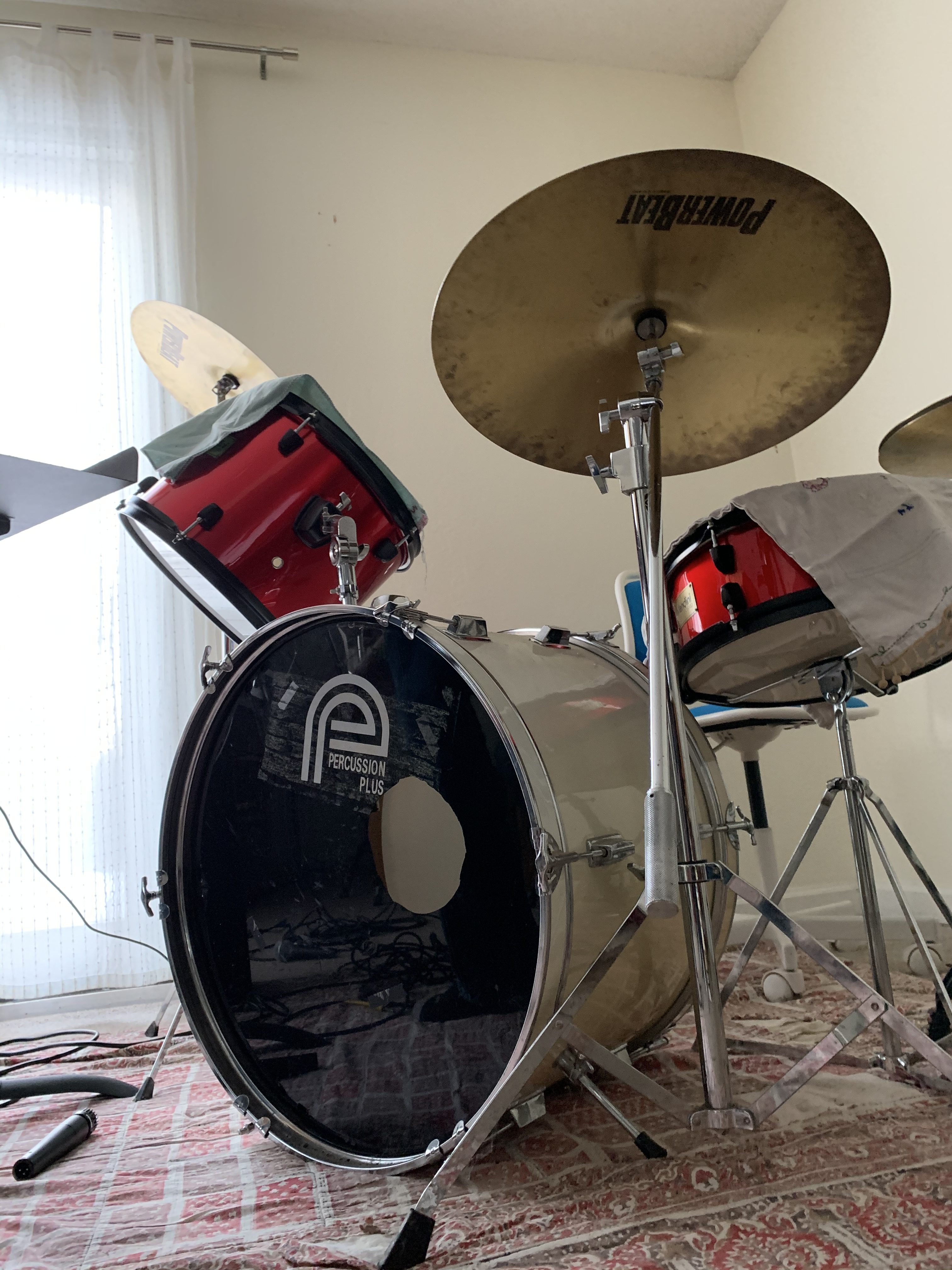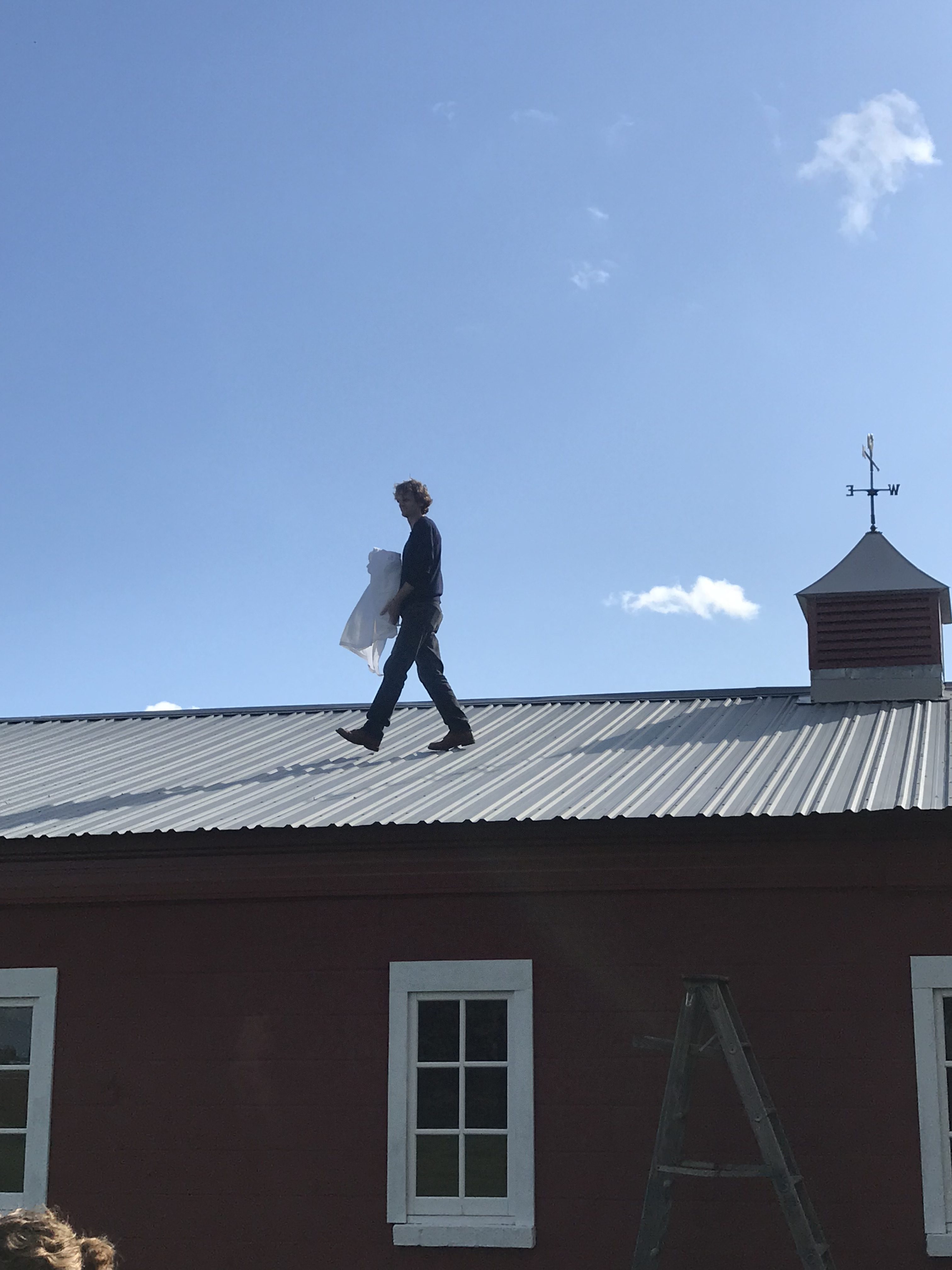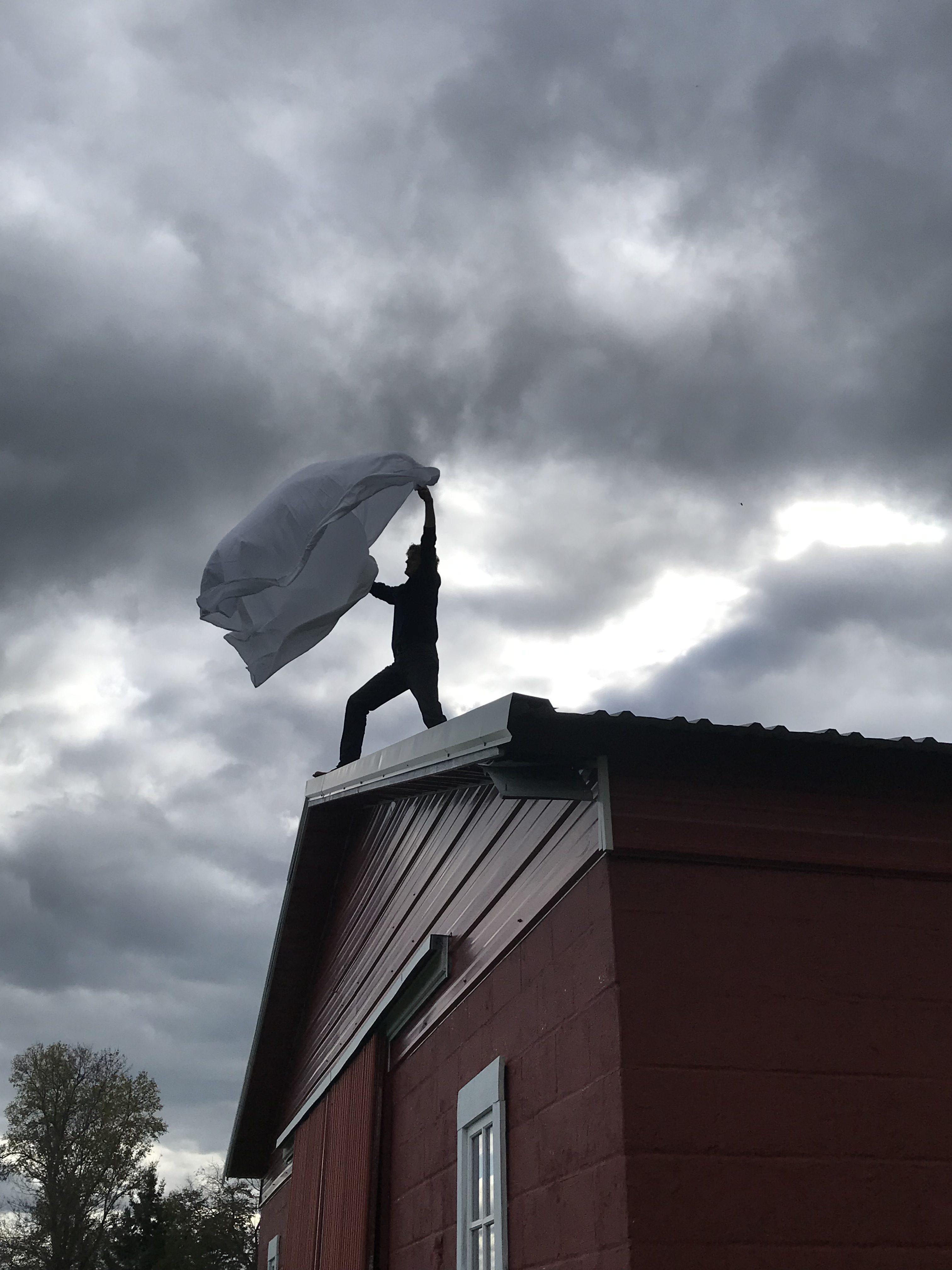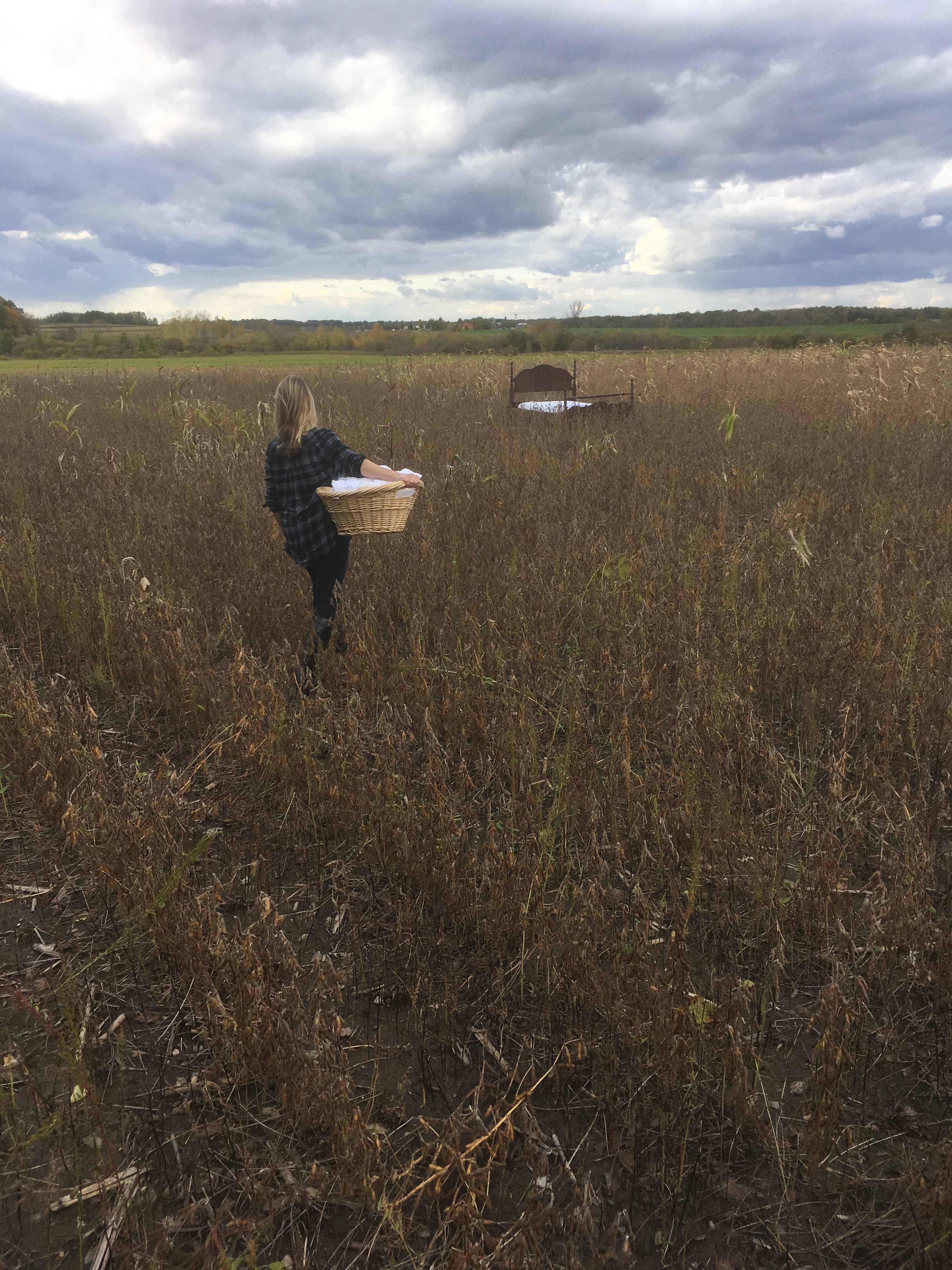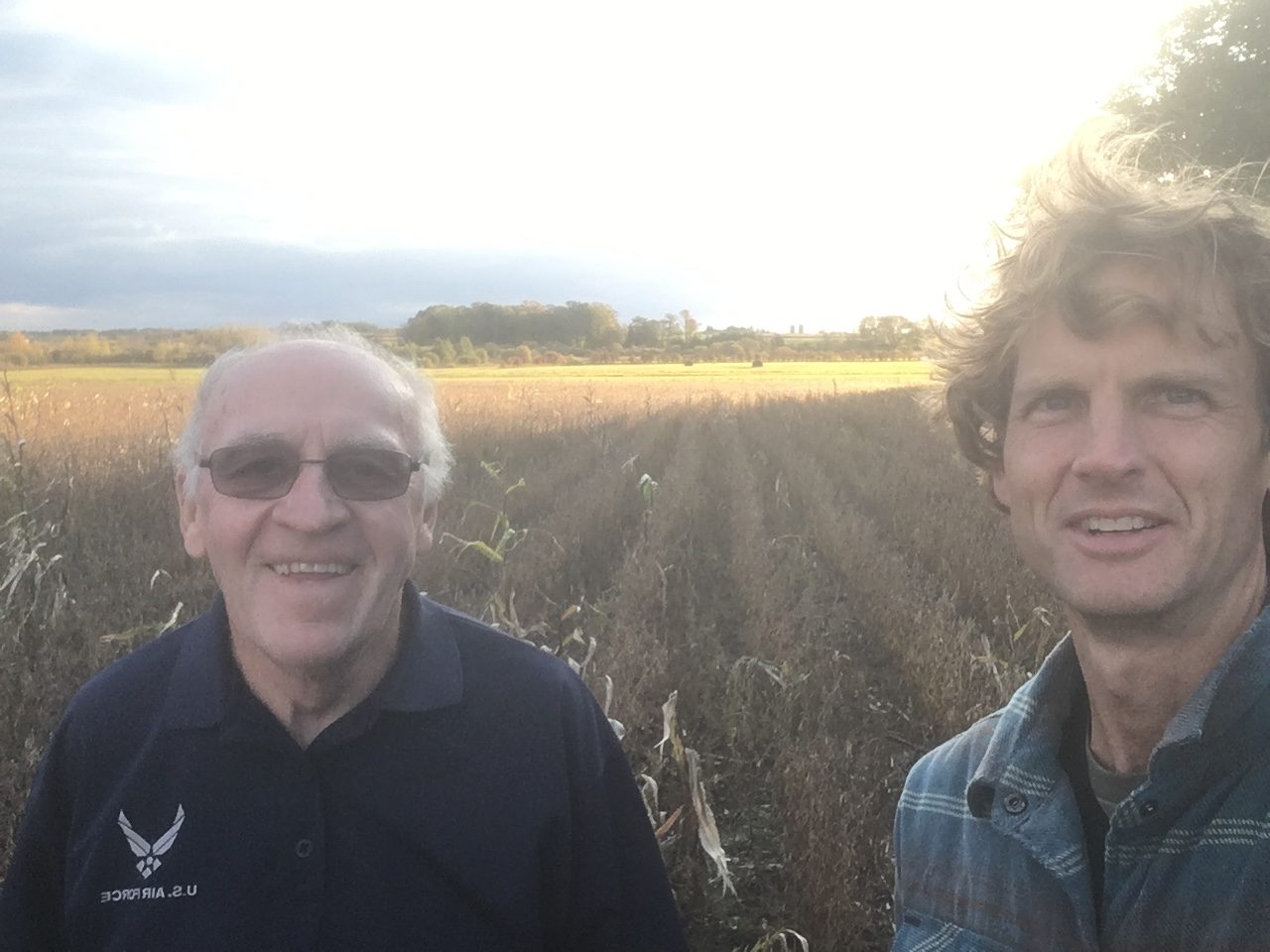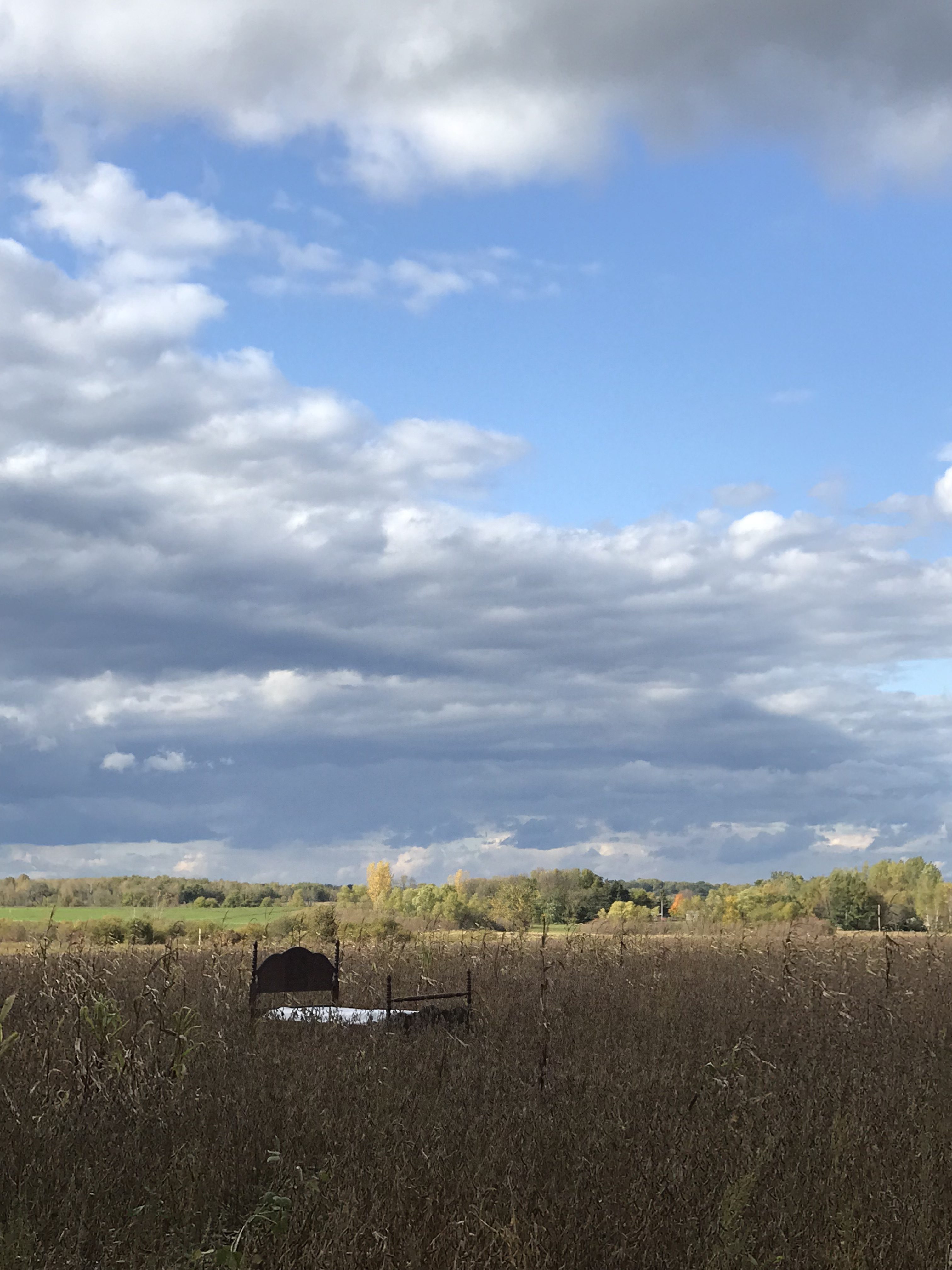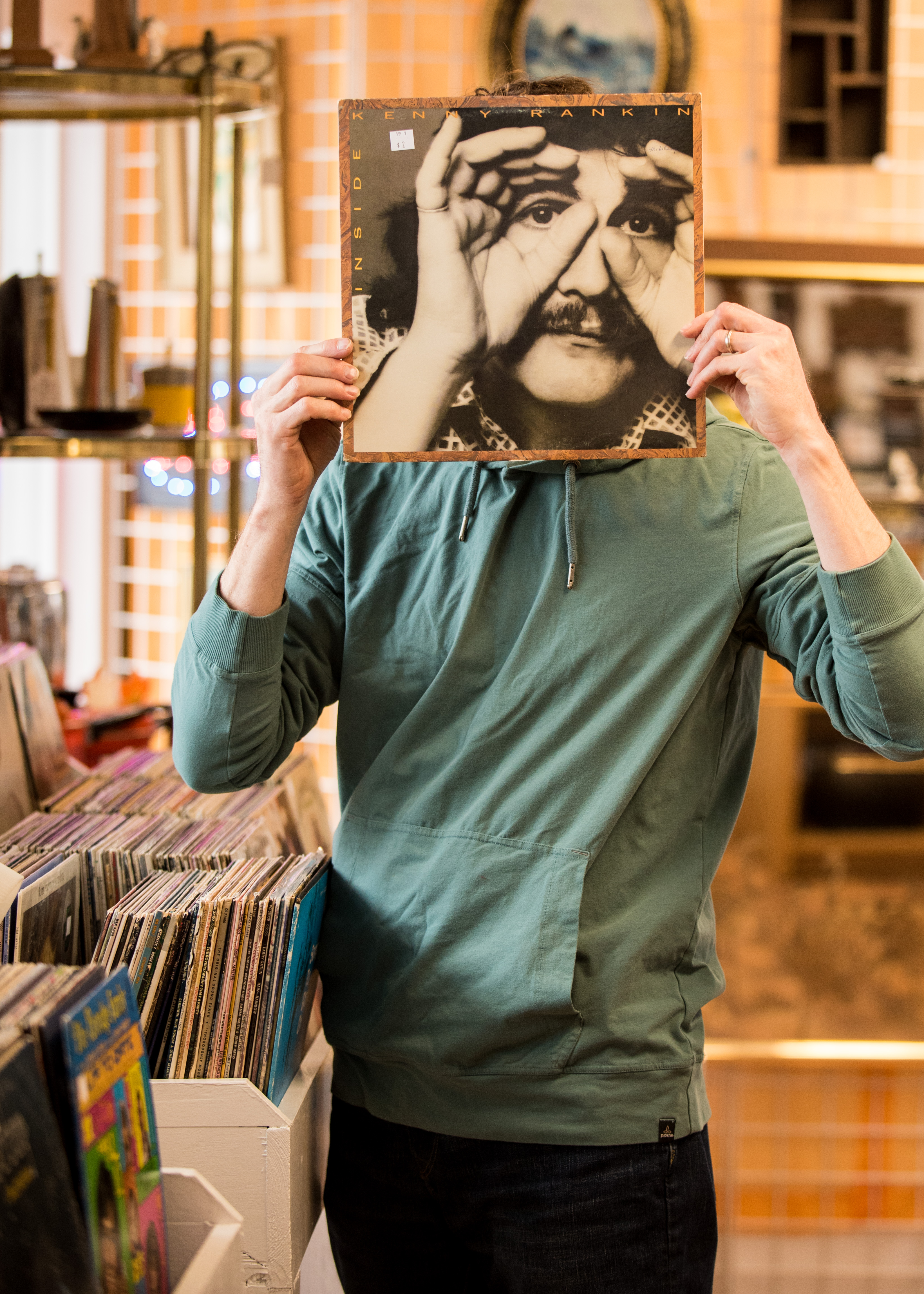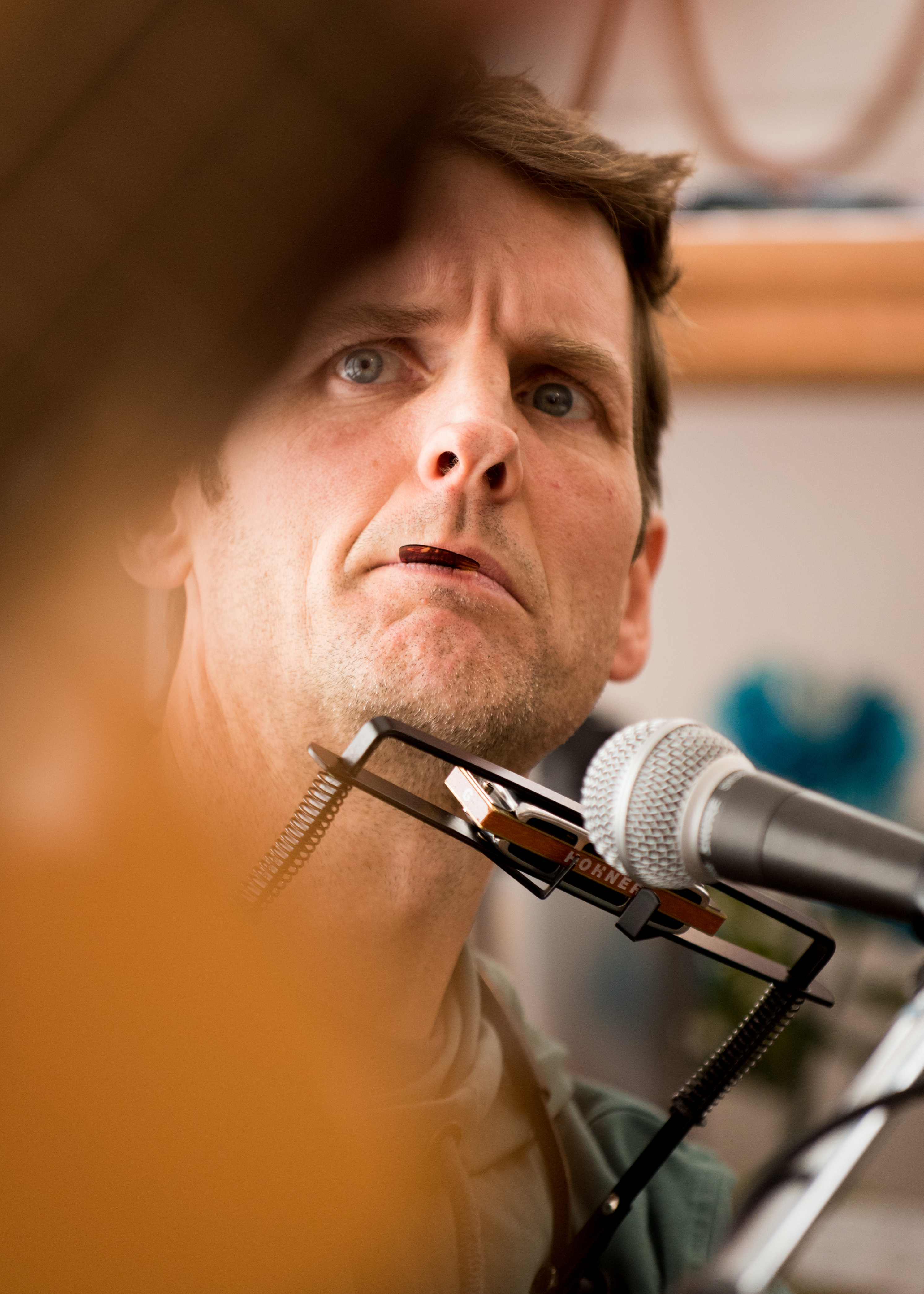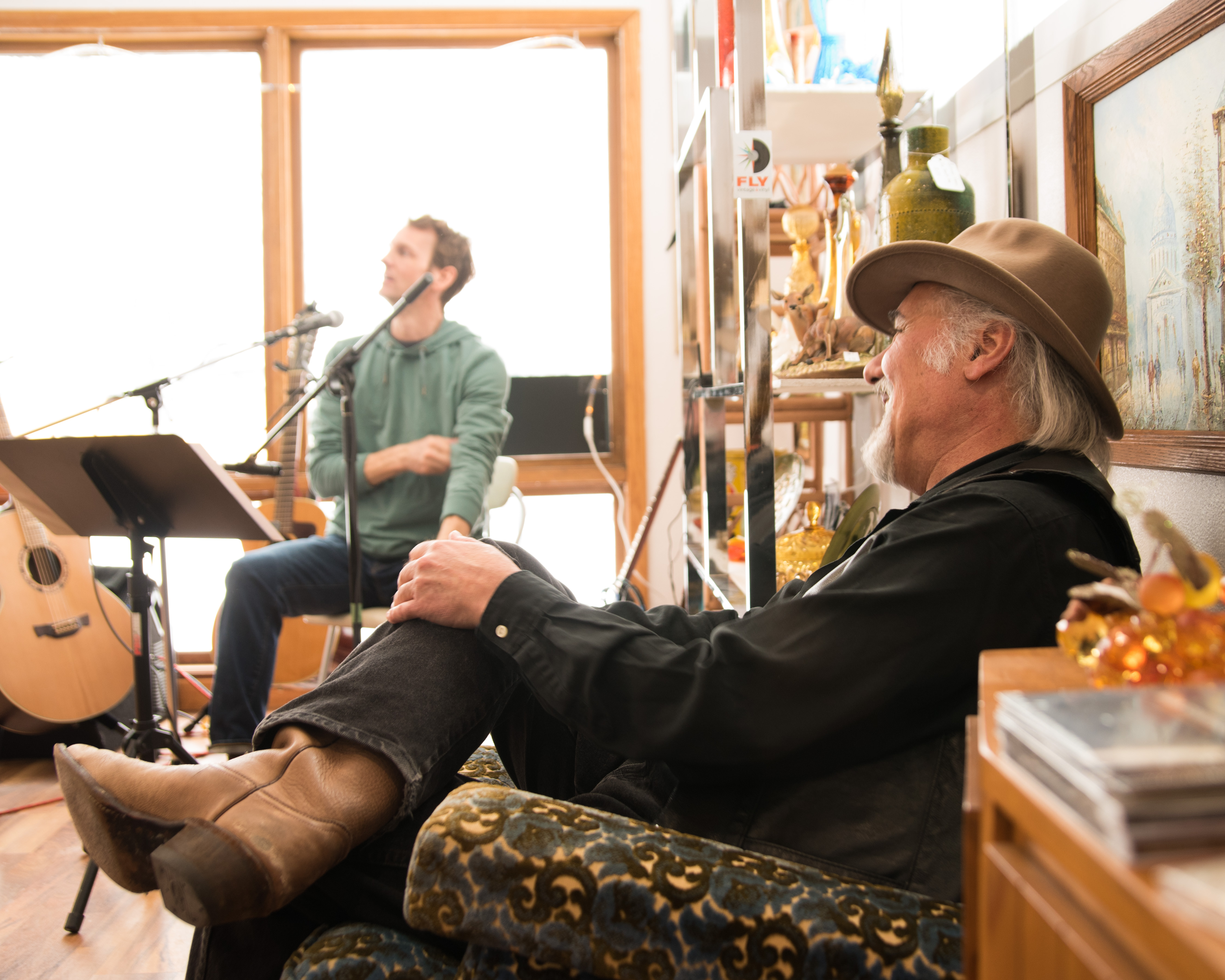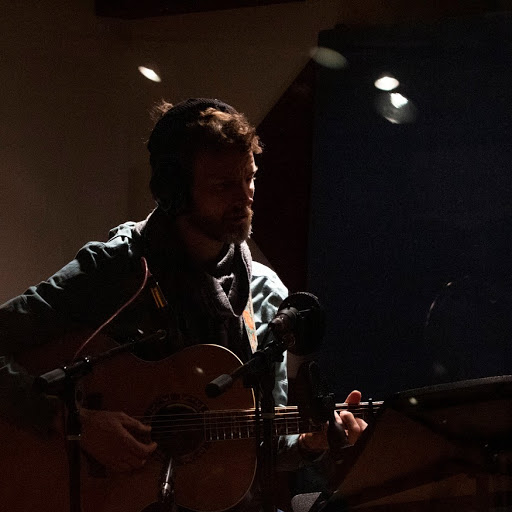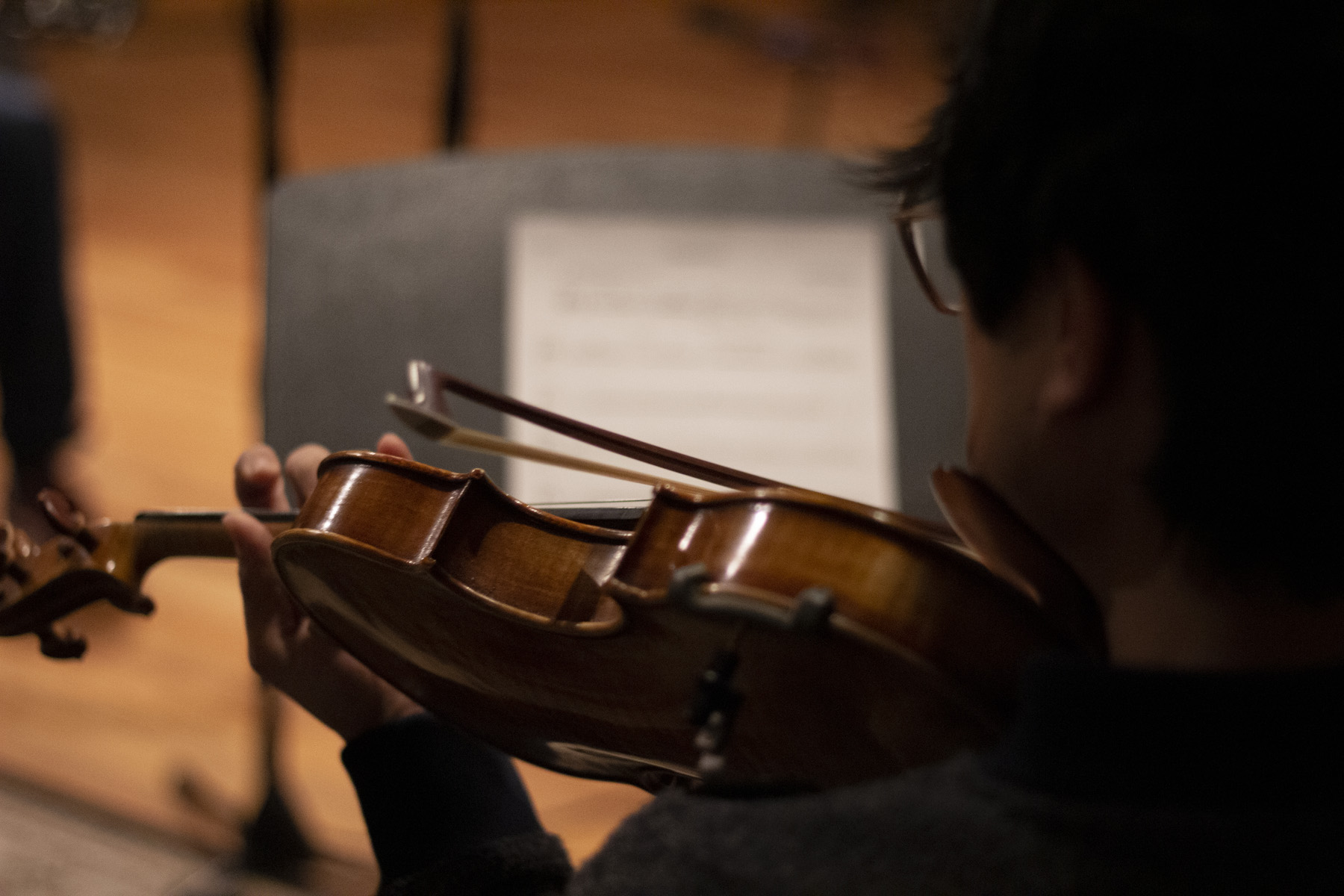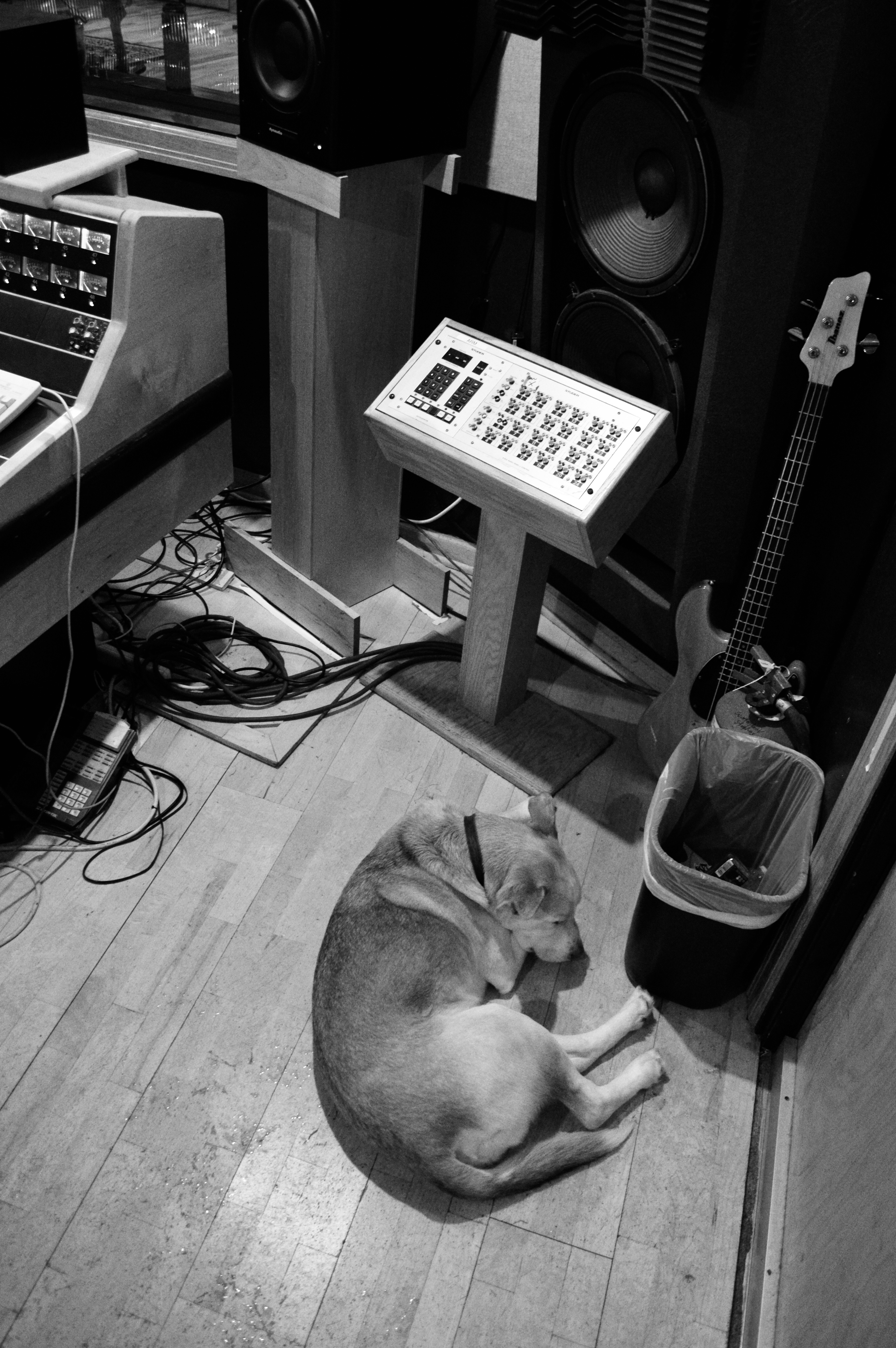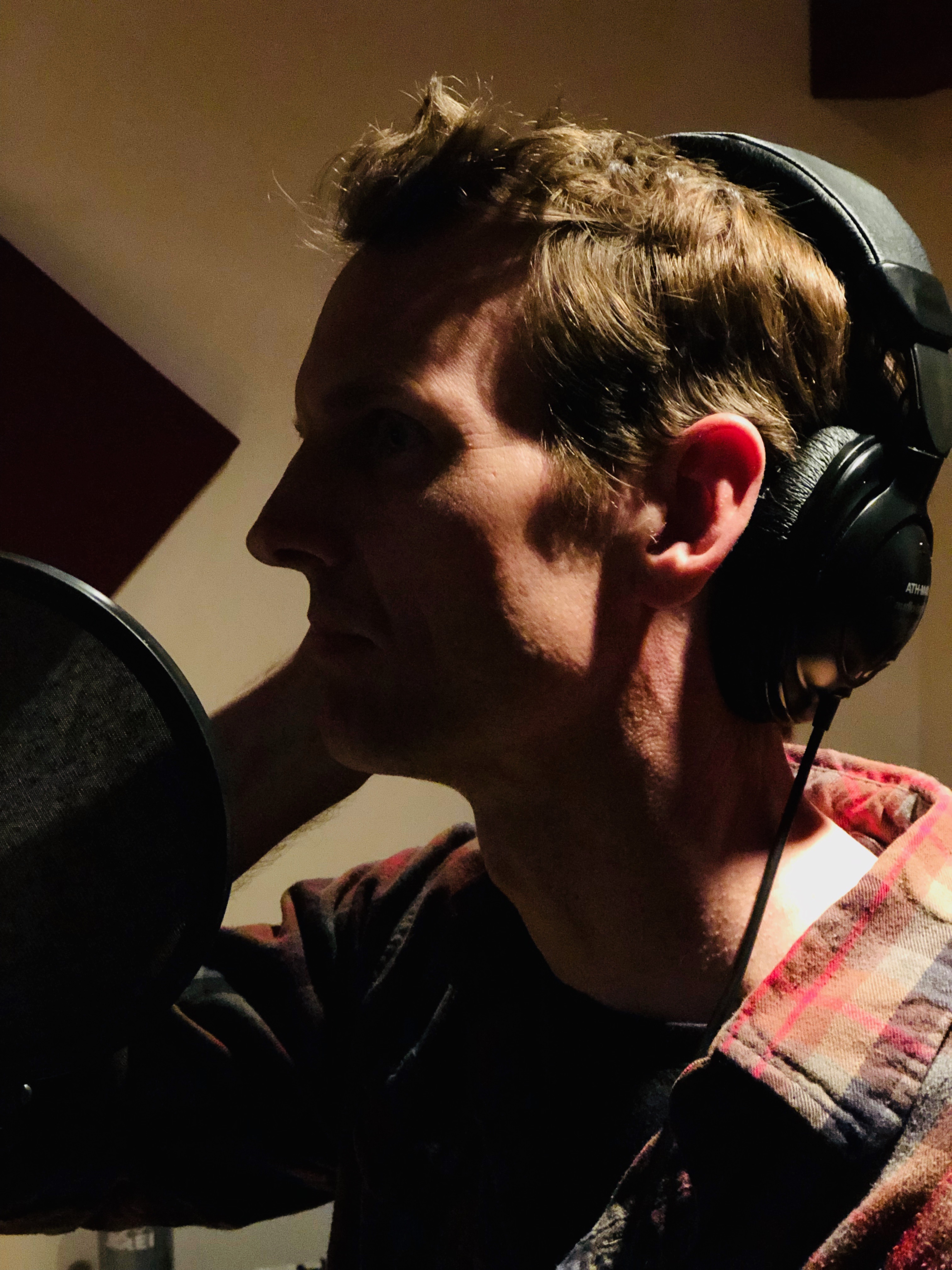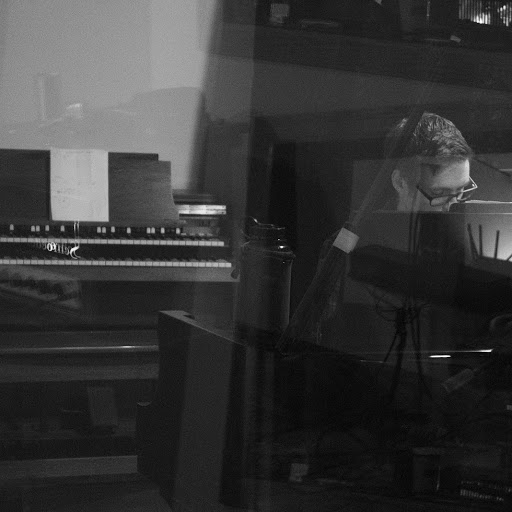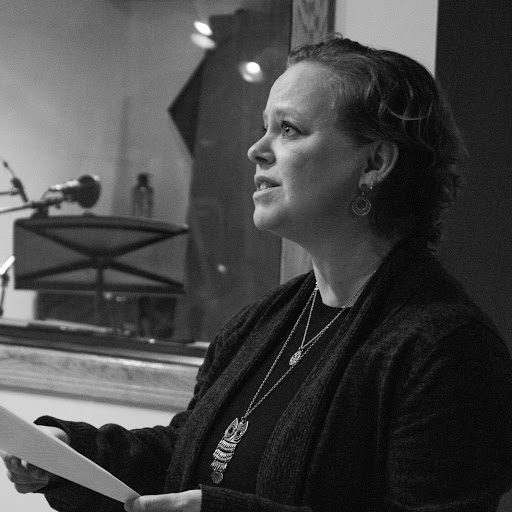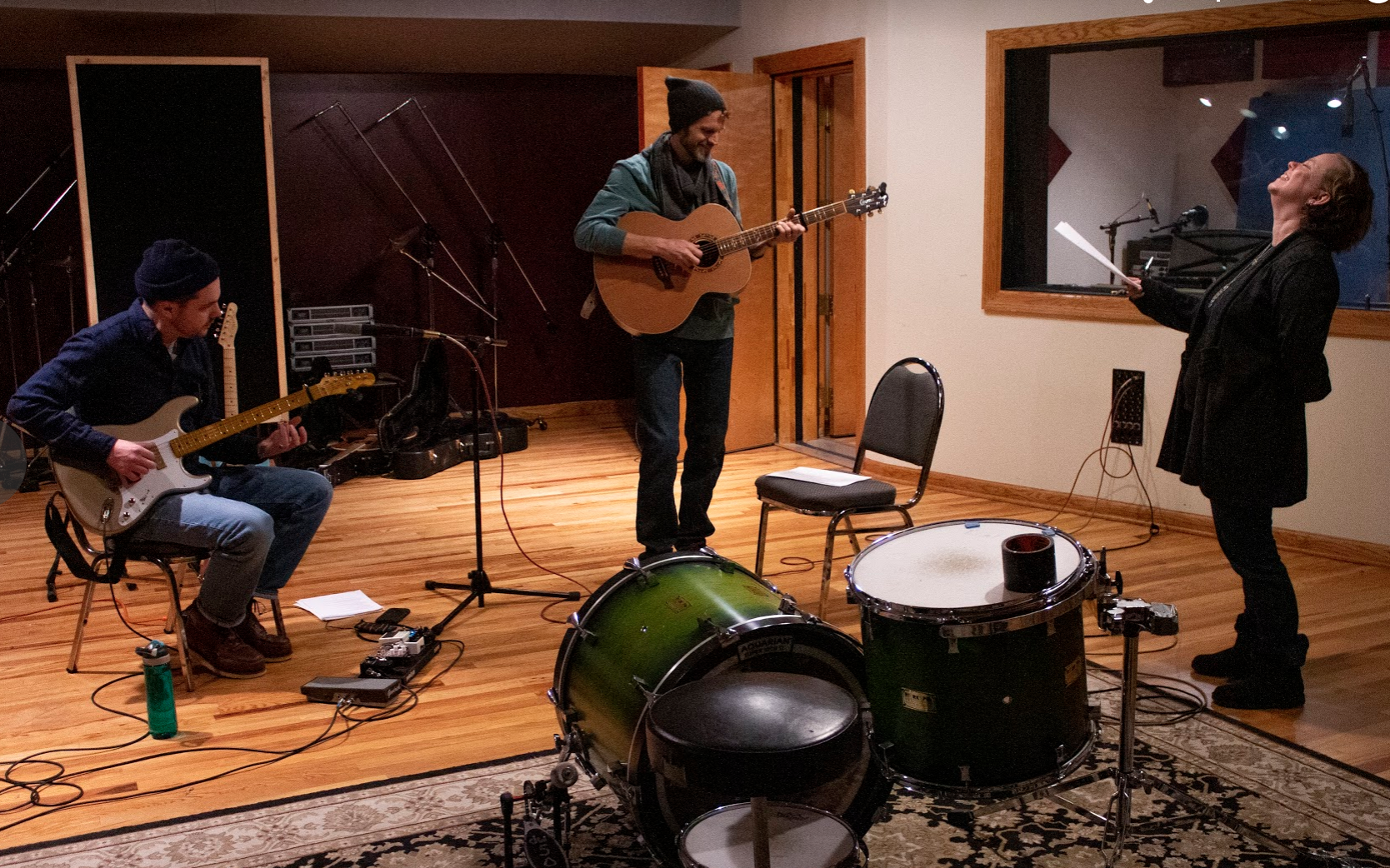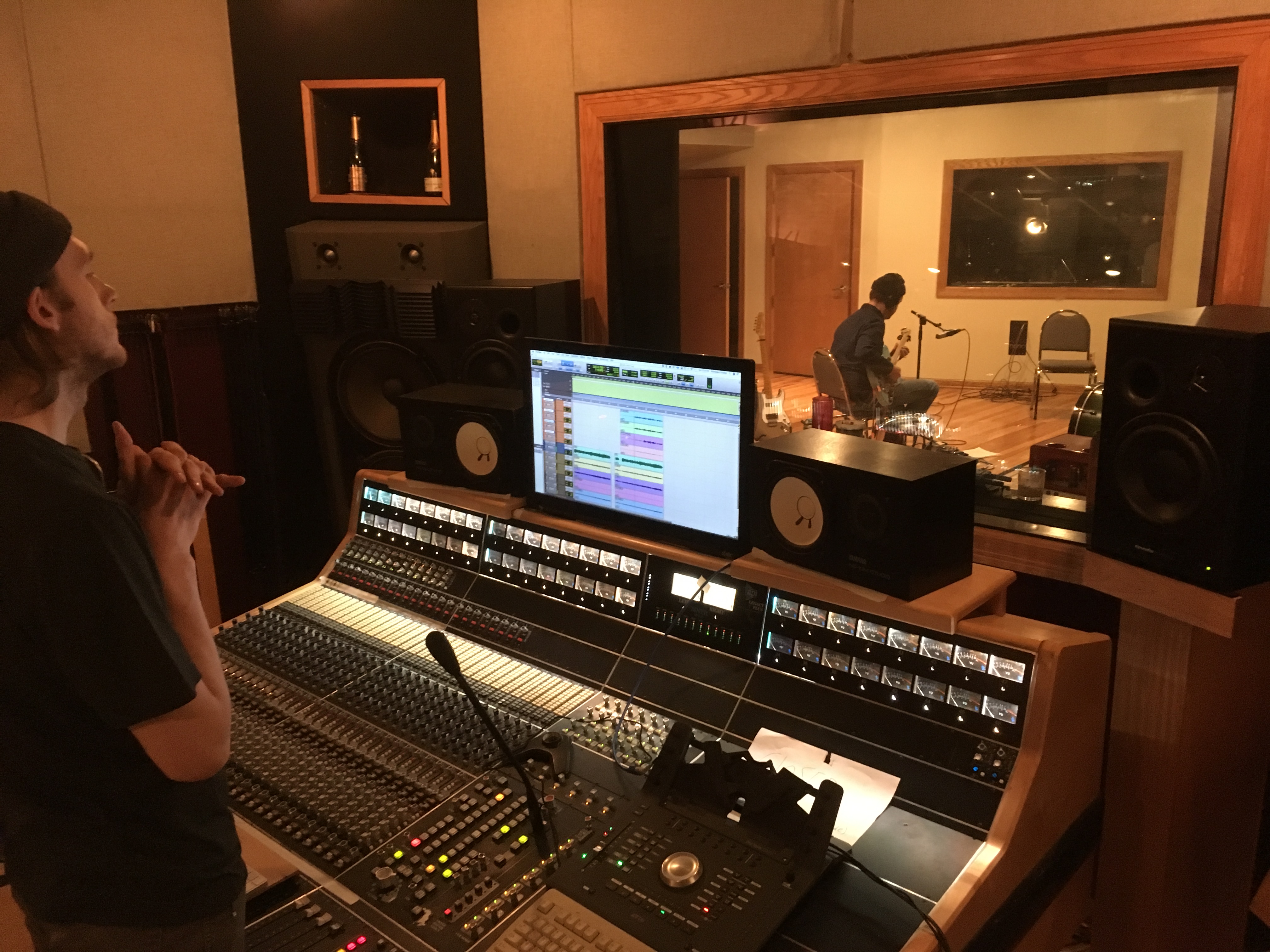blog
March 17, 2024
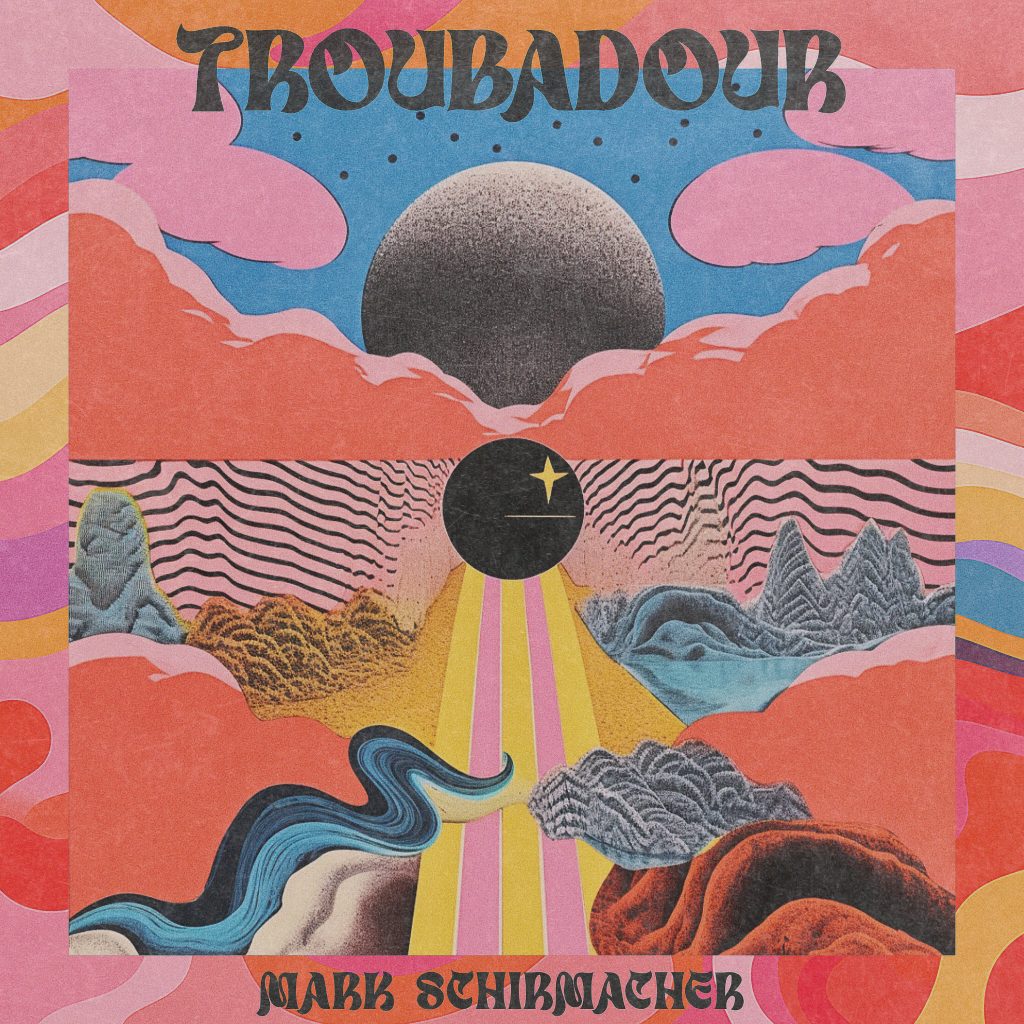
How the “Troubadour” album came to be and a bit about some of the songs
It was a overcast afternoon and Chris wanted to test out some mics, see which ones he wanted to keep and so forth, so he invited me to the vast open space of the Cedar Cultural Center in Minneapolis Minnesota, where he was running sound later for a show. I set up my guitar, harmonicas, and a chair up on stage, and he surrounded my in various microphones, wanting to capture a live musician to test out his array of recording gear.
Chris and I worked together on my 2015 Broken Hearts Shine album, and we were thinking about working on another project, so he also wanted to hear what other songs I’d been working on. I played these songs, one after the other, w/o a break, and just got into the mood, happy to have the amazing space to work in and delighted that Chris was helping capture these songs.
I played for about 2 hours (it was cold in there), and most of what I recorded that afternoon is on this collection. A few I left off because they were either crap, or interrupted by some performance/tech snafu, and the remaining 11 songs is a intimate insight into my writing process and a fairly decent representation of my live performance modus operandi. I like to enunciate when I sing, I like to vary my strumming/picking patterns up, I like to have clean, concise versions of songs ready to go, and I also like to leave some sections open for rambling, excess music to be made on the fly – it’s all in here.
Huge thanks to Chris Frymire for recording these – and especially for holding on to them until 2024, when I reached out to him asking if he still had them anywhere and that I wanted to release them as is. Thank you, Chris!
Many of these songs made it onto the next record I would make, 2018’s Bird In Your Tree, and then 2019’s Losing Things. The other songs were passed over, rejected, or just plain “weren’t ready” for the bigtime exposure that I was gonna give ’em, you know? After all, I’m a big freakin deal and my little songs better have the steel and strength to put up with a lot of wear-n-tear out there in the real world – fact.
haha
Am I serious? Well, yes. Usually too much so. And never so much as on a few of these cuts: White Clay and Cheap Oil are especially topical (former about U.S. Indian Reservation policy & subsequent alcoholism and latter about the over-reach & greed of oil companies & consumers to pay down our price of gasoline in favor of ecological destruction for us and our future generations. A little light listening, eh? Sorry, can’t help you.
Some good ol’ love songs in here, too: Satisfied (a live favorite of mine, calms my nerves and gets my mind in proper focus), Bird In Your Tree (my mom’s favorite song of mine), and Old Man (Laughter in the LInes) about my dear old dad and a lovely neighbor I had once. These are solid, clear-feeling odes to a love that is evident and true. No wiggle room. I will sing these as long as I can.
A few confused love songs in here, too. Love is a complex, layered emotion (reality? time zone? state of being?) and I like writing about the different moods of true love, forget the lovey-dovey shit…sometimes. Crazy Fool is about my lifelong baby, and how I’m crazy to love her (first captivated by her Madonna imitation in a high school drama class) and how I’m even crazier in love with her now than ever. Epic Love is how two people can make it through rough times to come out…pretty ok.
Then, there are some contemplations: One is Study Of Love, a multi-angled look at the different sorts of love out there and what they’ll make you do – buy a ring/buy a gun/buy a parakeet that sings/pick a gravestone/lets the baby cry in the middle of the night – just a bunch of visuals detailing what someone does for love. And then the most contemplative song of all, 4 Walls. When I was low, so low, I took a walk by a local lake and wondered at the calm, grey fall water, knowing at the bottom of that lake lay other poor souls who’d lost hope, and I didn’t want to be one of them. Or I did, but I didn’t. All the while, knowing that I needed a home to live in (four walls), but feeling more at home with the rushes, dogwood trees, lapping water…A song full of longing, that’s for sure.
I love a lot of other songwriters, and buried inside 2 of my songs here (Travel By Love and Bird In Your Tree) are a few songs that felt “right” tucked in there, so ‘thank you’ Lionel Ritchie for your masterpiece Stuck On You and Amanda McBroom for the lovely The Rose, I couldn’t have written Bird In Your Tree and Travel By Love w/o you.
Finally, the great Johnny Cash wrote I Still Miss Someone in the 1950’s and it stands as one of my favorite forlorn love songs of all time, had to sing it that day in April, 2016, as it was a standard in my sets then – and now. Thanks, Mr. Cash for the splendid emotional stew on this one.
I hope you enjoy the album and keep your eye open for the CD, I’m thinking of pressing a few.
Troubadour content recorded LIVE at Cedar Cultural Center (Minneapolis, Minnesota) on April 9, 2016 by Chris Frymire and released on March 15, 2024.
April 20, 2022
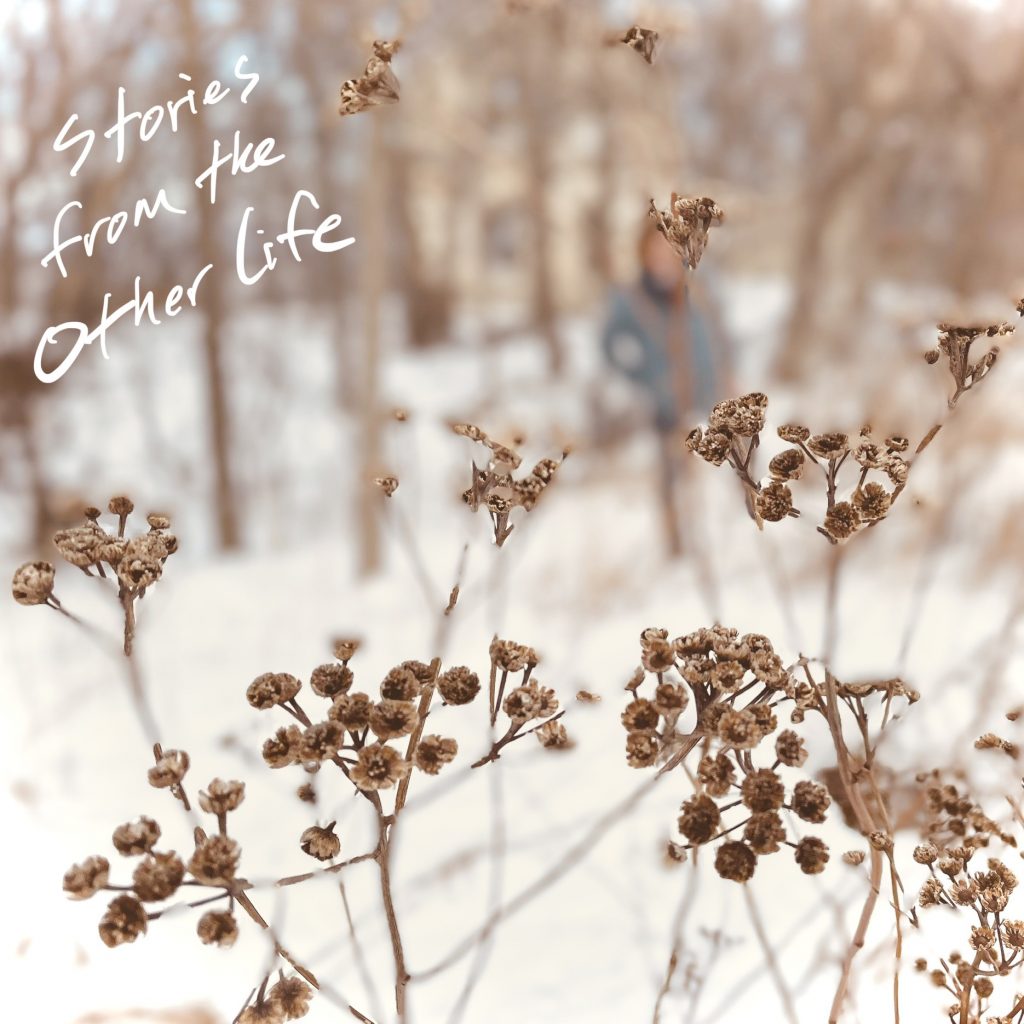
April 20, 2022
10 Things you may not know about “Stories From The Other Life”
Number 10: The Title – “Stories From The Other Life.” Nate2timez came up with it. I wasn’t sure if I liked the ‘Stories From’ part, but now I love it. It makes the album feel like it’s a compilation of short ideas collected in one place. I guess that’s what an album should feel like.
Number 9: This album is completely collaborative. How it worked, is I would sit down and record the song once through, using one mic and singing and playing acoustic guitar in a single performance. I would do that 3 or 4 times until I got the performance I wanted, with the right tempo and song structure. Then, I went over that and played just the guitar parts along with the final version, often making 2-3 “finished” guitar parts that varied a little bit, and then, going over those with redone vocal parts. Then, I’d drop out the original take I made, and would be left with clean, focused, and isolated takes of guitar and vocals, so Nate could have more flexibility during mixing. I then sent him the individual WAV files of each song and he would import them into his DAW and start adding elements he heard. He would tell me sometimes what he wanted to add to a song, but sometimes it was a surprise. Keys, drum beats, atmosphere, reverb – all these elements were his invention, and mixing is magic. Once his musical elements and mixing were complete, he would send me a rough mix of where the song was at and we’d talk about what we like, what works and doesn’t work, and what we could add / subtract / change to make it what we wanted. Some songs were easy to finish and others took more effort. If I remember, “World Without You” was a little stubborn, taking more work on the tail end than, say, “The Other Life”, which came together rather quickly. The album art, incidentally, was completely collaborative, as well. I went out with my wife and we took pics of me in my blue jacket (the one I’m wearing on the cover) and I sent him about 20 different pics to choose from. He liked the closeup of the dead plant stems with my blurry figure in the distance. Again, I was surprised at which image jumped out at him, but was excited to go in an unknown direction. After a few attempts by other people to write the name of the album on the cover, I ended up doing it myself, claiming the album’s title in my own handwriting.
Number 8: From 22 to 5. I sent Nate about 22 song demos to choose from, asking him to pick 5-6 songs he wanted to work with. He chose 5 and we started working with those. I was very surprised at the 5 songs he chose, because they tended toward the “folk” side of my songwriting, not the more “pop” style that I thought he would prefer. I was most excited about “World Without You”, because I have often wondered what that song could sound like fully produced, and have always liked the lyric writing.
Number 7: When in doubt, send too many stems. For every song, I would send 2-3 finished guitar takes, and 3-4 finished vocal takes. None was the same, sometimes the vocal takes had different lyrics, different notes, and even singing during different parts of the song. I trust Nate to choose the parts that resonate most with his production idea for the song, and TBH I love the surprise of hearing which takes / lyrics he would use. He always mercilessly throws out about 70% of what I send his way, and for that, I think we end up with a better finished product. Strangely, I’m not bothered by this abundant waste, but respect his brutal editing skills, as I am a fierce proponent of self editing while in the throes of the recording & writing process. The exception is on “World Without You,” which I sent an additional 12 electric guitar stems that could have turned the song into a nightmarish Marilyn Mason / Smashing Pumpkins masterpiece with detuned riffs and an uber-chunky wall of sound. Maybe for a remix…?
Number 6: Being sad has a purpose. “Never Been Lonely” is the most recently penned song on the album, written in the late Fall of 2021. On a weekend getaway with my wife, we went to a Northern Minnesota campground (ELY, MN) where we’d spent the past 10 years with our young (and growing) family. It was the first time being there without our kids, and I was surprised by an overwhelming sadness. I hadn’t been in that physical space w/o them and I sharply felt their absence – missed them being young children, toddlers, babies – and when I asked my wife about it, she told me she’d cried about the same thing the day earlier. Well, my wife went home to the cities for work, and I stayed on an extra day. Talking to her on the phone as she drove back home, I said, “I don’t think I’m gonna make it. It’s so lonely here…” and she said, ‘Well, better put that sadness to use and write a song about it.’ I started writing that night (breaking a year long lyric writing drought) and had the song mostly finished by the next afternoon. Probably my favorite song of mine right now, really looking forward to performing it live.
Number 5: Art runs in the family. The Music Video!! Emily Freeze is a filmmaker who offered to shoot a video for the title track, “The Other Life,” and her sister Ellen Freeze is the actress in the vid. Well, as it turns out, these two creatives are Nate’s sisters and they all got to work together making this music video a reality. I love the moodiness and non-descript storytelling featured in this gorgeous video. I believe that art and music are open for interpretation, and Emily did a lovely job of telling a story of a young, wandering searcher to my music and lyrics. Somehow it fills in the blanks for listeners without having to say anything at all.
Number 4: Visit your mom. 4 of the 5 songs were done. We were debating the 5th song, and I remember saying that it would be a week or two until I could lay down tracks for it because I wanted to play piano, and I had to get it tuned before recording. Well, I think we both felt the momentum being threatened, so Nate asked, ‘hey, why don’t we write a new song together and make that our 5th song?’ I was totally game for this change of plans, and felt like the project needed a dose of spontaneity. The next day, I went to visit my mom and dad, both aging wonderfully, but aging nonetheless, and spending time with my mom at their house on the lake, I was struck by the feeling of “NOW.” Now is all we have, and our health and breath could disappear tomorrow. I went home with love in my heart and a longing to preserve the sacred feeling of “Now” in my bones – this time together with loved ones; this time that we may or may not get again. Nate had just sent a simple piano part with some strings, and asked me to freestyle some lyrics over the top. ‘Just sing,’ he said. I stole away into my studio for an hour and came up with “Do We Have Now?” a love song to my mom, our fragility as people, and our temporary and ever-waning status as beings on this earth. This song is pure collaboration, and holds a special place on this album. It was born out of emotional necessity, the lyrics flowing out of the moment, not written down like most of my lyrics are.
Number 3: Hollywood, up for grabs. While in the studio recording my 2019 album “Losing Things,” I recorded a demo version of “This Could Be Our Night.” I was sure it was destined to be on that record (it wasn’t haha) and that’s fine, ‘cuz the production that Nate gave it was worth the wait. In his own words, Nate says:
My favorite production choice throughout the project was adding lofi drums to the song, “This Could Be Our Night.” I also added a lot of ambient melodies throughout the EP which created an emotional, dreamy sound.
I was excited when Nate told me he wanted to add drums to “This Could Be Our Night” and I added bass guitar at the end to give the production a cohesive feel and strong low end. Also, this song was written after I saw the movie A Star Is Born, and was pretty much inspired by Lady Gaga & Bradley Cooper’s song “Shallow.” There are a few chordal and melodic similarities that you could point to, and originally I wanted it to be a duet, as well. But overall, I feel like “This Could Be Our Night” is original, as the feelings and lyrics come from my life, my relationship, my experience.
Number 2: Short and Sweet. One of our goals was having the songs come in about 2 &½ minutes each, giving people a short, emotional listening experience but not wearing them out with a 5 minute folk song (that’s what I’m good at haha). Well, the running length of songs on this EP range from 2:42 to 4:25, with the shortest song (the one closest to the target length of 2:30 minutes, is “Do We Have Now?”. Nate sent me the outline for that song, so I couldn’t do my usual 4 verses + 3 choruses + 1 bridge = 5 minute song routine.
Number 1: Fun is good. The most fun part of this project was adding my own melodies and ideas to Mark’s songs that he has had written for years. It was very cool to make all of the basic ideas of tracks come to life. – Nate2Timez
Sometimes music production loses the “fun” part of it, and working with other artists can have its own stressful element. But trusting Nate’s creative process and production choices on this project was key – and also trusting the lyric material – really allowed me to have fun. I sang naturally and without distraction on the record (“finding” my singing voice and being comfortable with it seems to be a life-long journey), and giving my acoustic-based songs over to Nate’s production was very freeing and fun. I had no worries and I feel like these songs reflect their emotional intent, while being imbued with fresh resonance in the hands of Nate’s Lofi / hip hop production sensibilities. I hope you enjoy the EP, and you can expect more from us in the future.
Blessings – Mark
November 20, 2021
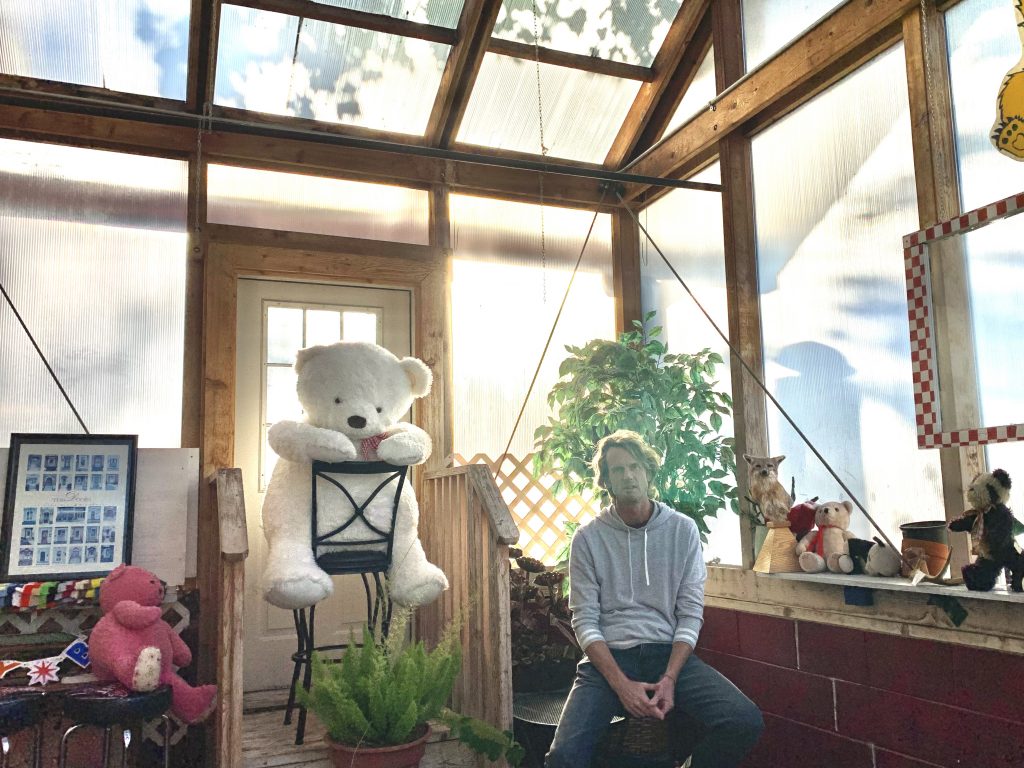
Heading into Thanksgiving & Christmas, I begin evaluating the past year. I’m tempted to wax philosophical and say how “thankful” I am for this or that, and that’s what most people are saying this time of year. And that’s cool. It’s okay to stop and recognize the people, events, and special moments that make our sometimes difficult and challenging lives really, really beautiful. I’m just a little averse to open displays of ass-kissery, and I feel like doing the “what I’m thankful for” speech borders on some version of this. But you know what? I guess I’m gonna contradict myself and say that, ‘yeah, I am insanely thankful for tons of things,’ and I don’t even care if I’m accused of the same ass-kissery I myself am scrutinizing everyone else of committing. To this end, I will begin with my parents. I’m grateful for them and that I can go over to their house (we both live in Minnesota, so that’s easy) and hug them whenever I want. That’s pretty awesome, hugging your parents as a full grown person. I am thankful for that. They appear in my new song “Better Things”:
“My children grow, my parents know / their tree is full of leaves
Do better things await us / for those who dare believe”
I am thankful for the relationships I’ve developed this year as Low Key Trampoline. A year 1/2 ago, I went to Nashville, TN to meet with some producers who might’ve helped me work on my next EP – but as fate would have it, COVID-19 happened a month later, the world imploded, and we were all left to redefine our lives, practices, plans, dreams, and stilted realities against new guidelines and expectations. As good fortune would have it, I visited Jack White’s record store while in Nashville, Third Man Records, and its stated mission “to bring tangibility and spontaneity back into the record business and issue releases that leave no doubt in the minds of listeners that music is indeed sacred” blew my freaking mind, and deeply resonated with me. Ultimately REMINDING me that I used to make music like this, too – record a collection of songs and urgently get them out to friends, family, coffee shop owners I knew. Music was always sacred to me and looking for a producer in Nashville – cool and “next level” as that was – was somehow not fully reflective of my entirety as a musician…trying to wrap up…I get home from my trip and wonder, “what can I do to infuse my work with more fun, urgency, and daring?” I have ALWAYS despised the “safe route” that artists take: playing it safe on stage, rehearsing ad nauseum, carefully calculating every note, phrase, move, or recording session – so a move to unfamiliar territory came rather naturally. I started playing with my iPhone, pushing buttons, stringing beats and sounds together, and Low Key Trampoline was born. Because of this freedom I have granted myself from the constraints of overthinking the process and the product, I am able to write and release music that I feel is wildly relevant, from the heart, and happens to engage with another set of listeners and producers I never knew existed.
One such member of this vibrant Lofi community is Mr. Jeff Shadows. We started collab’ing on some songs after appearing on Dcthebeatmaker’s Sunset Sessions in Fall of ’20, and have been steadily releasing tracks together since then. Jeff’s adventurous production of our music helps our sound reach different listeners than either of our music independently, and as an artist (and fellow dad & lifelong music junkie) he is always bringing out the best parts of my creative self. It’s been 3 EPs and a single, and I think we’re just getting going tbh
This is all to say that I am thankful for the musical relationships I’ve developed this past year, mostly through music creation. But that inherently includes visual artists, record labels, fellow producers, and the listening community.

A Low Key Christmas is sort of a culmination of all the musical relationships I’ve made this past year 1/2. I am beyond honored and excited to share this project with the world, as Christmas music – oft overplayed and pedantic – is such a gorgeous canon of work and deserves another chance. So, with 15 other artists, we collab’d the absolute crap out of these songs. Here are a few to give you an idea of what the album is like:
Here is a wider sampling of the collaborations I’ve been humbled and thrilled to be part of:
I could go on like this, being thankful for the blades of grass under my feet, the trees that pour out oxygen for us to breathe, my wife (a whole other blog if she’s cool with it) my siblings and children, the blue of the sky and chill of our nearest inland sea, Lake Superior, but you’ve already heard enough. Go be thankful yourself. Take a risk. Tell someone how you feel. Create something that might look bad to you or someone else, or it might be so far from perfect that it drives you crazy – it’s okay. It’s just a thing. Happy Thanksgiving, Merry Christmas soon enough, and then Happy New Year, then what?
up to you
7/27/21
i remember this guy
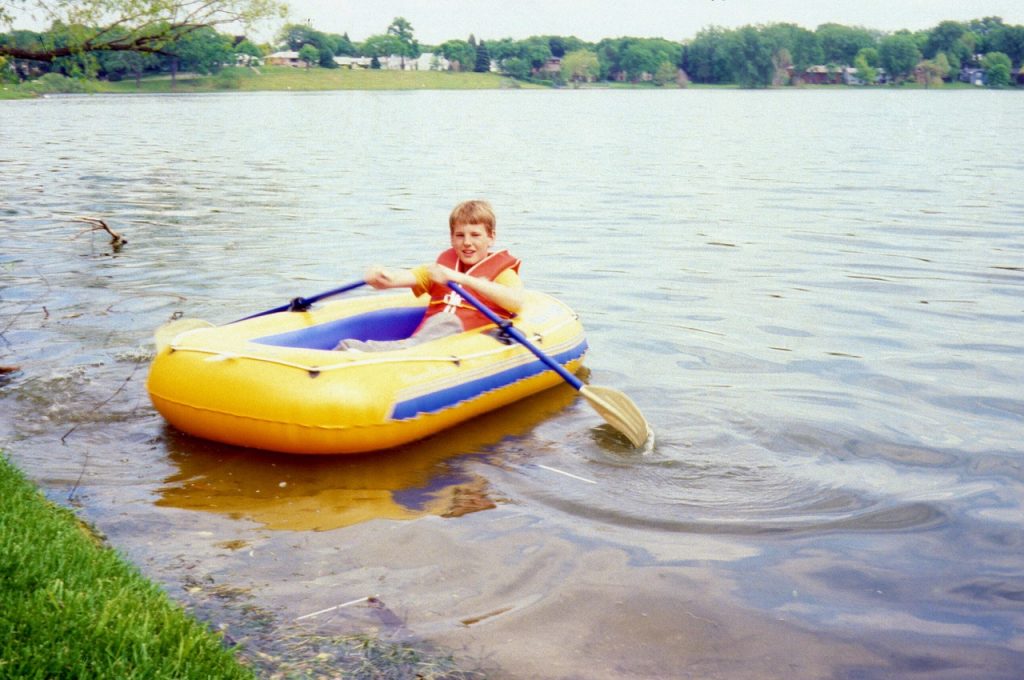
When I was 12 or 13, I had a raft. I’d row out and sit in the lake, looking around me, absorbing nature, or what nature I could find in the suburban lake I grew up on. Turtles, the breeze, goldfish, snappers, ducks, geese, neighbors across the lake doing this or that with their lawns, I would observe these natural details from afar, absorbed in my singular vessel’s trajectory and the moment itself.
I felt free.
As I got older, finding new forms of “freedom” was the trick. Bikes, skateboards, cars, special spots within nature, friendships – and music. Music was the freest place I could go to. Partly because I understood its boundaries, rules, potential energies, curves, precipices, hues, ups & downs and ins & outs better than any other structure in my life. I guess music and nature together have both been my “sacred” spaces.
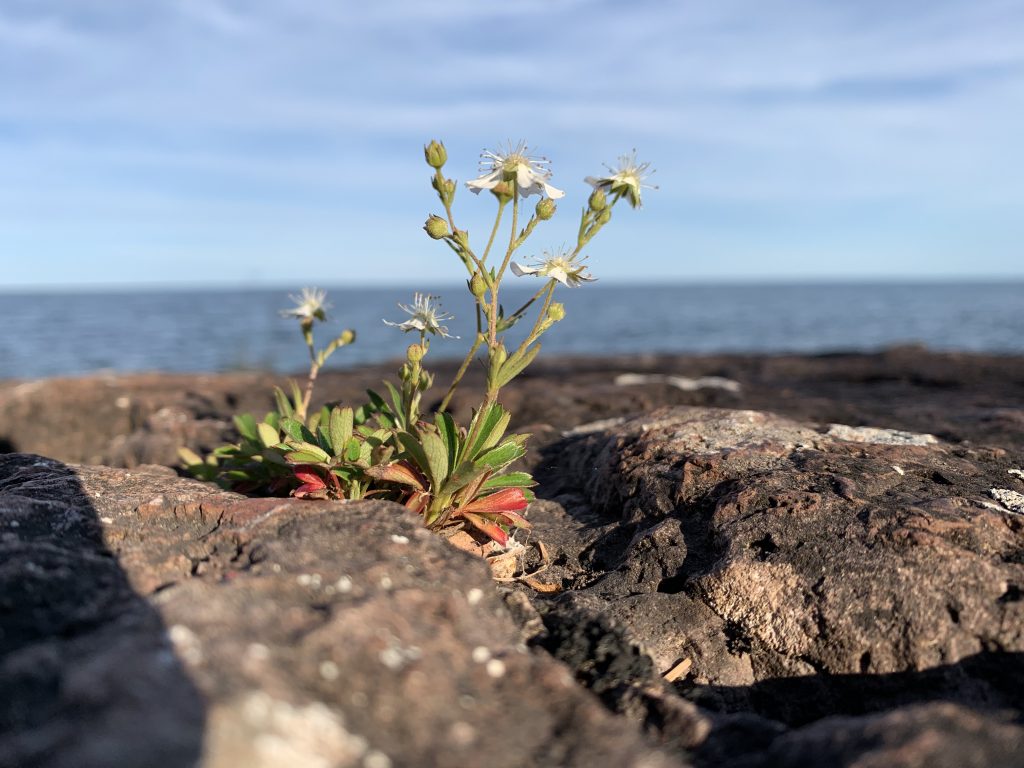
Well, I’m older now. Not 12 or 13. Nature still holds my troubled head in her hands and music, well, music is still my main frame format of emotional expression – I know it better than ever, and sometimes, I get to make sounds that surprise and comfort me back.
Yellow String Memory is my newest music project, and as the cover art suggests, it meshes perfectly with my past – floating on the lake, letting the sun, wind, and reeds lull and console me. The music is from my heart, and I hope you find something inside these songs to connect to, some sound or instrument that will remind you of somewhere or somebody you have filed away in your brain / heart. Enjoy this new music and thanks for joining me on my journey!
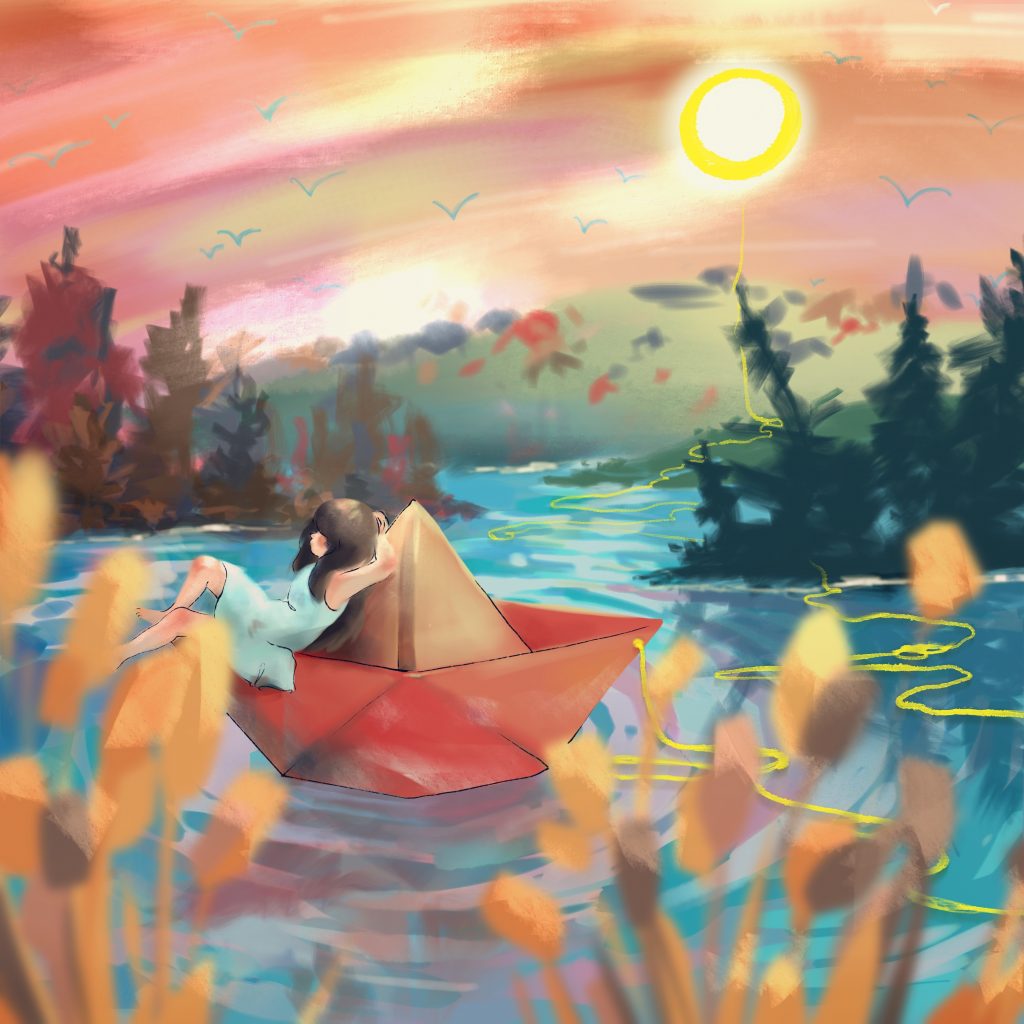
Music released by Tsunami Sounds records – learn more here:
https://www.tsunami-sounds.com/upcoming
Art direction by Behind Walls Media. Read their Art Direction Article about the making of this album here: https://www.behindwallsmedia.com/yellowstringmemory
6/26/21
Part of living is finding a way to deal with the stuff that goes on inside us.
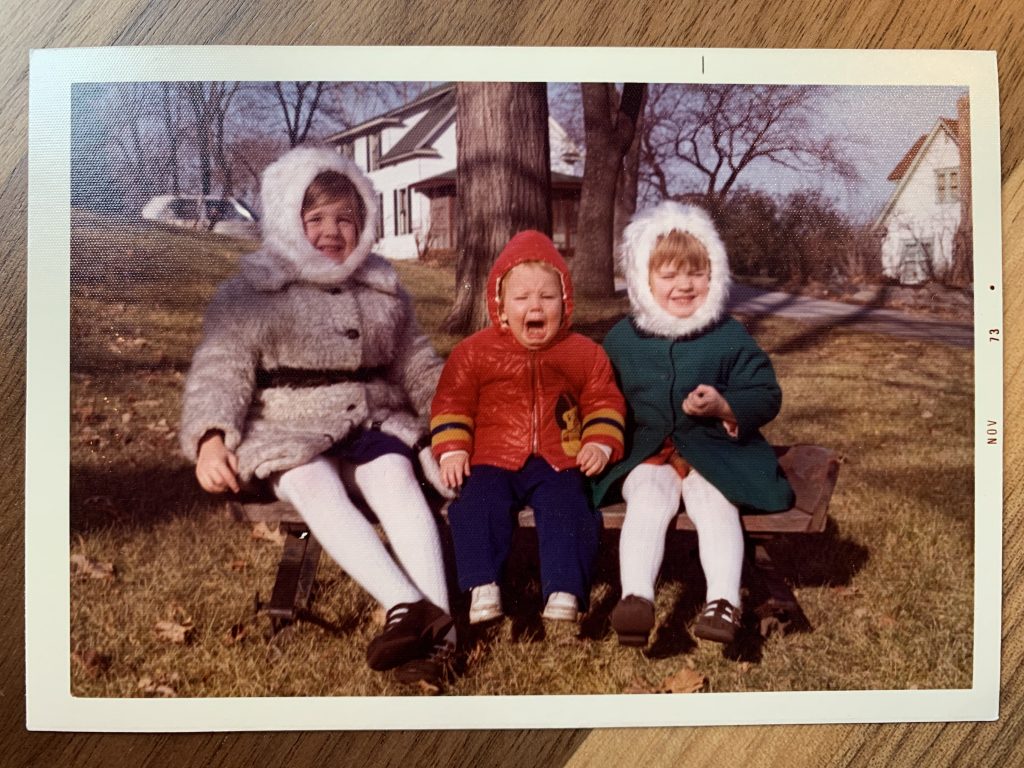
My wonderful older sisters Amy (left) and Julie (right) couldn’t help me here. I’m in the middle, screaming my head off. I needed something and couldn’t…quite…manage…life…I didn’t know it at 1 years old when this picture was taken, but eventually I found music as my mode of expression.
I had lots of music in my head as a child. When I started taking piano lessons from my mother in 5th grade, I’d come to our lessons with a new thing I’d created on the piano, and my dear mom didn’t have the heart to discourage me, or get on my case for not practicing the songs I was supposed to practice. She would sit patiently as I played my “song” for her, then we’d dip into our lesson material – always under practiced – and I would hesitantly progress through my assignments, buzzing from the affirmation I received moments earlier. Thus began my “journey of expression of emotion through sound” and it continues to this day –

My upcoming EP on Tsunami Sounds is called “Yellow String Memory” and it’s the latest chapter in my “journey of expression of emotion through sound.” I’ll be dropping thoughts and background information about the project here. Keep creating, take care of one another, and have an amazing day 🙂
Follow Fée Brandt on Instagram: @feeb_story
Follow Tsunami Sounds on Instagram: @tsunami_soundz
Follow Mark Schirmacher on Instagram: @lowkeytrampoline
6/16/21
Okay, so it’s been a minute. COVID, Trump, so many shootings, all the shit that flows downhill and still the sun shines bright this June midnight. There’s a drought in Minnesota. Everybody’s lawns are frying, looking like hay in the midwest in fall. Not the pride and joy of suburban neighborhoods quite like that.
So what’s new? Why am I writing now? Well, I guess I could do a better job. I’m a dad, a husband, a part-time worker at a nursing home, a songwriter, a dude that likes to relax and listen to my records. And an occasional writer. Pretty tough on myself most of the time, and interested in connections. People, musical turns, natural relationships, chemical reactions, spaces that can be tightened or lighted by words, I’ll do that.
I’m writing loads of songs these days, since I last wrote this blog it’s been something like 60+ tunes, most of them under the name “Low Key Trampoline.” Here’s a French podcast that goes into more detail:
It’s been a year since I started putting music out under this moniker, and it was such a long time ago…I’m not sure how much to share. Simply put, I was feeling impatient and limited in my creative range as a folk artist, so took the bull by the horns and started recording things on my iPhone, releasing them IMMEDIATELY as to not dissuade myself with due examination of said sounds, and zoom bang, my “electronic” music was ushered into this world. It sounds like this:
and it sounds like this:
and this:
and this:
It really just sounds like the inside of my head and heart. No fancy production values getting in the way of this business, pa. It’s music, plain and simple. LoFi, electronic, acoustic, jazzhop, nuclassical, post-rock – all the names a person can slap on it, it probably is.
All this to say that I’m here, I’m happy, I’m satisfied beyond what a person should be. Thank God for music, sunshine, my wife, my kids, and my absurd freeway to the stars. Find me on Instagram @lowkeytrampoline
peace and love ~ mark
1/6/20
A day of recording with Sea Beagle yielded this demo of the song, “I Will Leave You.” It’s pretty bad. The verses get all screwed up, the drums are completely crap, the piano part is full of sour notes – but this is my demo process. I want to hear the sounds all together to see if I can work with it. Can this song survive outside of my brain? I’m not sure on yet, it’s choking a bit in the thin atmosphere…
…but there’s something I like about this rough demo. The darkness is there, the weird flitting piano strings work, the reedy harmonica on perma-suck feels right. My son is home on break and he’s the buttons-and-knobs guy, freeing me up to just play the song, which I love. So, as unpolished as it may be, here’s to the creative process.
11/7/19
I walk across a corrugated metal roof which sits atop a cinderblock barn painted red. My uncle Ken hoisted me up to this place with the bucket of his tractor. I think he likes helping me this way, and he’s surprisingly at ease with me walking around, 12 feet up in the air on a slipperty, steel surface. I’m no country boy, but I guess he figures I can handle myself with a little danger lurking about. One slip in my fancy city boots and I’m a hasty drive to the hospital and a story that gets passed around the phone lines between my aunt and uncle’s place and my parent’s house in the cities. I don’t fall off the roof.
I’m shooting a music video in Holdingford, Minnesota, the cradle of my cousins, Dave & Paul Abrahamson. Cousin Sara still lives up there in the house that our grandparents lived and died in, and incidentally, she’s the only cousin I see that day. We talk for a minute, then she gets back to her day’s business and I get back to mine. Uncle Ken and I have a rickety old bed to assemble and position out in the skeletal soybean field. It’s a gorgeous fall day in October and the leaves have turned their reddish-brown, some yellows, all to indicate that letting go of their branches is right around the corner. In Minnesota, the leaves turn colors and then they go away. For months and months and months. We get snow instead. Which looks nice on trees. But colorful leaves are way better. I was hoping to get up to the farm in time for the fall colors, but the field we’re using for our ‘rickety bed’ shot is mostly brown, a deadish gold color which tells the soybean harvester that it’s time. Time to nab the goods before the weather does.
I don’t have much to do on this day, so climbing around on the roof feels pretty good. I did the heavy lifting in the studio months ago recording “Sleep,” the song we’re making the video for. I don’t even know how to make a video. My wife is a brilliant visionary, ridiculously capable of running a small country, but willing and game enough to help me get this thing done. By ‘done’ I mean conceptualized, story-boarded, staffed, shot, and edited – (what is she doing with me?) She and Lance work together on every shot, talking with Ms. Angela Ericson about where to stand, which way to look, try this, try that. She’s a ballet dancer at heart, a performer of the highest order, and understands how physical movement, suggestion, and intention translate into a shared, intuitive visual perception. I am so happy to have her with us today. Plus, less of me on screen. A good thing.
When the laundry line shots are done, the ‘rickety bed’ in the empty field shots are done, and the rooftop sheet shots are done, I get a couple of chances to dial my performance in and hope that Freya and Lance get enough to work with. We wrap up, Angela heads back to the cities to put her kids to bed and get ready for another week of life in the cities, and Lance and Freya break down the equipment and do their part to get Lance back home. I take a few minutes with uncle Ken and head out to the field, grab a quick selfie, and break the bed down, moving it in a few trips back to the machine shed. I soak in this time with my uncle, walking out into the field, looking around, pointing, talking about stuff, and am comforted by the help he’s given me today.
About 10 years ago, uncle Ken was driving on a country road in the early morning hours after a long day and night of beet harvesting. His small pickup truck ran off the road, flipped and careened after hitting the ditch, and he managed to crawl out of the rear sliding window, somehow waiting for a rescue vehicle to spot him and take care of his badly mangled body. His back was broken a bunch of different ways, and we all wondered if he was going to be able to walk again. But here we are, years later, walking into this bean field together, relishing the last minutes of daylight on a miraculous mid-October afternoon. I write songs to draw a thicker pencil line between me and my eventual mortality. I write songs to create a ripple in the fabric of what everyday living is – the earning of money, the crying over spilt blood and spilt milk, the rock and a hard place of adult life. I write songs to etch my memory into the minds of the living. I write songs to escape death, to live a little longer. But at this moment, standing in the field with my uncle, I’m just plain happy. Happy that for once, a stupid song I wrote brought me exactly to where I wanted to be.
Watch the video here: “Sleep” on YouTube
8/9/19
Enough of what you think, Mark. What does the band have to say?
For this next installment of the New Album Blog, we’ll step inside the minds of the band members who made the record with me. Their unfiltered thoughts, responses, and insights are laid bare for all of humanity to read. Proceed with caution…
Meet engineer and musician, Kosh.
What instrument would you take if you were stranded on a desert island? Although I prefer to be behind the skins, I would bring a guitar. I don’t know. I think it would keep me entertained better than drums would.
What’s been your favorite part of this recording process? My favorite part of this recording process was being a fly on the wall and just watching it all come together. Especially the day the strings were recorded. Hearing that come together behind the glass in the mixing room was surreal.
What is the first concert you went to? The first concert I went to was The Jets and Limited Warranty at the Minnesota State Fair. I was not interested in the The Jets but liked Limited Warranty. Maybe this was an early influence for my love of V-Drums.
What is the last CD/album/song you purchased? I hardly purchase albums or songs anymore. I know this is not supporting the artists, sorry it is just too easy to listen to new music on the radio or on YouTube. That being said I think Lightning Bolt by Pearl Jam was my last purchase.
Beatles or the Rolling Stones? Why? Easy, neither. I don’t know why but neither of these bands ever did anything for me. I’ve had a friend make a Beatles mixed tape to have me listen to their “best” songs and still nothing. I understand the importance of them and appreciate that, they just never did anything for me.
Favorite local band/artist? This is a little bit of a draw. Semisonic and The Jayhawks. Any and all iterations of these bands throughout the years have been influential for me.
What’s your dream band lineup? This one should be fun. I would put Stewart Copeland behind the drums, Jon Stockman on bass, Mike McCready on rhythm guitar, Joe Satriani on Lead, and Layne Staley on vocals.
What’s your fly-on-the-wall music history moment you’d like to witness? I would love to be there for Guns and Roses’ recording of Appetite for Destruction. Something appealing about watching such an amazing album be created and the chaos that must have been involved with them at that time.
What’s your dream project? Budget is no limit… I’ve been thinking about this one for years. I have this concept that would be difficult, maybe impossible to produce. It involves writing maybe an EP worth of songs that would have two different songs that could be played at the same time, one song panned in the left and one in the right. So they could be listened to together or separately.
The first time I realized I wanted to play music forever was… I don’t remember the exact year, but in the mid 2000’s after having one or more children, my free time became more valuable and a hard commodity to come by. I had more hobbies at that point and I had to make a decision which would stay and which would go. That was when I decided that making music would have to be a part of my life forever.
Biography: I go by Kosh in my musical projects. I have played drums recently in a couple bands, DueNorth (soon to be changed, so stay tuned on that). https://www.facebook.com/duenorthmusic/ The other is Good Commies. https://www.facebook.com/GoodCommies/
END OF INTERVIEW.
Meet the producer, Christian Andrews.
What instrument would you take if you were stranded on a desert island? A Korg Kronos Workstation. I don’t think I could live without the sounds of drums, bass and strings so having (digital) access to most instruments would be a lifesaver in a desert island situation.
What instrument do you wish you could play? Keys. I saw Billy Steele write an entire song using his digital keyboard and was blown away by his virtuosity as a multi-instrumentalist while playing through the medium of piano keys. I think that’s the fastest way to becoming a “multi-instrumentalist” which I think is a very important in the current state of the music business.
What’s been your favorite part of this recording process? For me it’s been the mixing/post production stage. We didn’t get the time or talent for working on bunch of pre production (which is usually my favorite part), but for this record I think that the stuff we’ve added after the tracking days has really made this record shine. As the mixing engineer I got to have a chance at giving these songs a personality and that’s always really fun for me. For instance on four walls, I think the way I tackled the sonics of that song brought it to a whole new place that the rest of the songs on the record wouldn’t dare to go.
What surprised you most about this project? What really surprised me was the amount of support Mark has from so many amazing musicians. When we did Michael’s guitar overdubs I was really impressed at how he could change the way the song sounded with his playing. And during the live tracking sessions, it felt like everyone had been playing these songs for weeks even though there had only been a handful of rehearsals over the course of the whole project. I was really impressed with everyone that showed up on the record.
What is the first concert you went to? My first concert was a Bon Jovi concert in Chicago when I was 8 or 9. It was pretty cool seeing such a big artist play for my first ever concert experience. Only downside was since I was so little and it was so packed I could hardly see anything.
What is the last CD/album/song you purchased? Choose Your Weapon – Hiatus Kaiyote is the last vinyl that I’ve purchased.
What was the first album/CD/cassette you purchased? Tool – 10,000 Days was the first CD I remember spending my own money on. My stepdad had a copy of it burned on a CD and it got damaged somehow so I figured buying an actual copy was the best thing to do. I was very right.
Favorite local band/artist? Wanderer takes the cake for me. They were one of the first bands that played my first house venue called The Broke Haus in Dinkytown and they always impress me. Plus they are all super nice people.
A song that never loses its awesome sauce is…By Fire – Hiatus Kaiyote. The song is so complex and so groovy that I don’t think it could ever fall off the map for me.
Favorite Minnesota album is…I really like Remo Drive’s – Greatest Hits record. For their debut release they really found a niche and killed it.
Which song was your favorite to record on this project and why? I really liked doing Four Walls and Losing Things. To me these songs had the most emotional appeal and I don’t think the record would shine quite as bright without these sonically darker tunes.
What’s your fly-on-the-wall music history moment you’d like to witness? Any Prince recording session ever. The entertainment value in that would be next to priceless and to be able to have a Prince story is something really special, especially in the Twin Cities.
What’s your dream project? Budget is no limit…I’d really like to do a solo album. I’ve only played in bands for my entire music career and I think I’d like to have a crack at getting my own stories and ideas on to tape. I would love to go into the studio with a blank slate and build up a collection of songs that I thought were good enough for me to release and then hire my favorite musicians to add their spice to the record.
The first time I realized I wanted to play music forever was…When I performed the first time in front of people. I was covering Sweet Child O’ Mine and I absolutely butchered the second guitar solo in the song and was so critical and so upset with myself for not practicing enough to get that relatively easy part of the song perfect. From that point on I was just too stubborn to quit.
Biography
Christian Andrews is an engineer, producer and guitar player-converted bassist. He plays in a band called Creepy Monday.
–https://creepymonday.bandcamp.com/releases
END OF INTERVIEW
Meet the drummer, Kelley Lima
What instrument would you take if you were stranded on a desert island? Ukulele.
What instrument do you wish you could play? Piano or Guitar or Bass or Trumpet or Flute or…
What’s been your favorite part of this recording process? Hanging out with my high school friend Mark Schirmacher.
What surprised you most about this project? How good the songs are. Just kidding. I expected them to be fantastic, and they are fantastic.
What did you learn about yourself as a musician while working on this project? I could play laid back. I’m usually rockin’.
What is the first concert you went to? A duel concert with The Temptations and Four Tops.
What is the last CD/album/song you purchased? “Just Like Fire” by Pink (for my daughters Ashley and Freya).
What was the first album/CD/cassette you purchased? It may have been “Thriller” by Michael Jackson (cassette).
Beatles or the Rolling Stones? Why? The Beatles. John and Paul actually wrote the Rolling Stones first hit song.
Favorite local band/artist? Mark Schirmacher, The University of Minnesota Marching Band.
A song that never loses its awesome sauce is… “What Is Hip” by Tower of Power.
The next gig I’m playing is…TBD
Favorite Minnesota album is…Prince – 1999.
What’s your dream band lineup? Foo Fighters, Harry Connick, Jr., Norah Jones, Billy Joel (an interesting concert indeed).
Which song was your favorite to record on this project and why? “Travel By Love”. It was just fun to play. Plus, the clapping!
What’s your fly-on-the-wall music history moment you’d like to witness? Watching Paul McCartney’s reaction when Michael Jackson told him he took his advice about song rights investing after buying the rights to The Beatles music.
Least favorite food? Why? Octopus. Tasted like a rubber bicycle tire that drifted from Japan to Washington over seven and a half months. Not that I’ve eaten rubber…
What’s your dream project? Budget is no limit…Recording drums with Foo Fighters and the Minnesota Orchestra at Red Rocks Amphitheater in Morrison, CO in front of a live audience in July (Taylor Hawkins is on sabbatical).
What is the most annoying thing about Mark? He’s so fucking nice.
The first time I realized I wanted to play music forever was…When I was 10 and I held my first pair of drumsticks.
Biography – Kelley Lima has performed and recorded with many bands as a Drum Set Artist, Percussionist and Vocalist. He has also taught Drums and Percussion for many High Schools in the Midwest. He is currently the Drumline Instructor and Arranger for the University of Minnesota Marching Band.
For more information about Kelley, please visit kelleylima.com.
END OF INTERVIEW
5/22/19
Everything You Ever Wanted To Know About Audio Mastering But Were Afraid To Ask
OR
The Indigo Girls Light My Path
The songs are currently housed on a hard drive in a well-soundproofed and acoustically engineered room somewhere in Minneapolis getting mastered. What does this mean? Um, not sure completely. As far as the recording process goes, I get how most of it works. The mics, the studio baffles to strategically redirect sound waves, the overdubs, the golden-ticket of the best performance possible, the nerves, the mixing, I’m good with most of that. But then, things get a little mysterious.
What is audio “Mastering?” Here’s what Wikipedia says:
“In the earliest days of the recording industry, all phases of the recording and mastering process were entirely achieved by mechanical processes. Performers sang and/or played into a large acoustic horn and the master recording was created by the direct transfer of acoustic energy from the diaphragm of the recording horn to the mastering lathe, typically located in an adjoining room. The cutting head, driven by the energy transferred from the horn, inscribed a modulated groove into the surface of a rotating cylinder or disc. These masters were usually made from either a soft metal alloy or from wax; this gave rise to the colloquial term waxing, referring to the cutting of a record.”
To me, this sounds like the earliest audio recordings made by Edison. The resulting product would itself be the master, I think. Skipping forward, the studio medium eventually became 2” magnetic tape. In the early ‘90s (1990s, that is) 2” tape was still commonly used. But since nobody used a 2” reel-to-reel tape machine at home to spin the latest Pearl Jam recording, the studio mixes were dropped to a “master” copy (2” tape or early digital tape called “ADAT”) and then copied a bazillion times to keep the masses happy. The format would be cassette, vinyl record, or a CD.
Fast-forward to today:
“The source material, ideally at the original resolution, is processed using equalization, compression, limiting and other processes. Additional operations, such as editing, specifying the gaps between tracks, adjusting level, fading in and out, noise reduction and other signal restoration and enhancement processes can also be applied as part of the mastering stage. The source material is put in the proper order, commonly referred to as assembly (or ‘track’) sequencing. These operations prepare the music for either digital or analog, e.g. vinyl, replication.” (Wikipedia)
Clear as mud, right? So, after my songs are mastered, I’ll sit with the mastering engineer in his lair of sonic awesomeness and we’ll decide the track order (the order they appear on the record), the length of space inbetween each track (this is a whole other blog post that touches on Sony’s proprietary rights to the “2 second rule” between tracks), and the treatment of the beginning and endings of each track. In my case, the mixing engineer and I shaped each track’s beginning and ending either in recording, or before we passed the tracks on to our mastering engineer. The most important piece to take away from all this is that the mastering engineer helps give the record it’s final sound and feel. It’s also the last chance to backpedal on anything you want to change. Once it’s out of the mastering engineer’s hands, it goes to print. These days, that usually means CDs and digital formats for streaming, Spotify, YouTube, etc. The folks with real grit and vision press their music into vinyl. Ideally, I’d love to press this upcoming release that way, but in order to spare my back, save a few shekels, and a preserve the shred of dignity I’m hanging onto, I’m passing on this option. But that wonderful 12” x 12” x ⅛” package…
Lemme wrap this up. I’ll say that I’m not needed too much during the mastering process. I need to approve or reject the versions as they come back to me, so I’ll listen and respond appropriately when the time comes. His fingerprints will be the last ones left on the music end of this project. After that, the album art people (photographer, artist, designer) will put their spin on things. And as we speak, these ideas are cooking in distant fires. I’m looking for smoke signals. And soon very soon, I’ll have the honor and horror of acting on all these little decisions I’ve been making with so many people along the way, and in a burst of excitement, exhaustion, and optimism, let this thing out of the cage and watch her run. Or hobble. Or just sit there.
In the meantime, I’m taking my cue from the Indigo Girls:
But my life is more than a vision
The sweetest part is acting after making a decision
4/15/19
And now we wait…OR “A violinist, a saxophonist, and a banjo player walk into a bar…”
I feel like I’m in a waiting room of sorts. The recording phase is over, and all the tracks are being mixed so that the listener hears this instrument at just the right volume and placement in the mix, and that instrument occupies just the right volume and placement in the mix, and all the sounds and voices sound just right. This process is equal parts technical and creative. Technical, as it takes comprehensive knowledge of the recording software and accompanying editing/mixing software; and creative, because the best mixed songs are sensitive, intuitive interpretations of the cold facts of the recording session. These ‘facts’ are guitar parts, vocal parts, horn parts, drum parts, etc., and they are all occupying the same 3 minute song space. They can’t all be center stage. So the mixing engineer must use intuition and musicality to decide what’s gonna lead the way, and build an empathetic hierarchy to help explain what the lyrics and melody of this tune are trying to say. Technical and creative. I’m relieved this is not part of my job description.
And now we wait…
Studio dates have come and gone, lists have been made and remade, plans have been discussed, adhered to, and abandoned as new ones were improvised on the fly, and myriad musicians bearing sanctified instruments – drums, guitars, banjo, violin, the human voice, saxophone, trumpet, piano – have all passed through the hallowed space of my imagination, intercepting the trajectory of my embryonic ideas to lay their metaphysical hands on my songs, wishing them fare-thee-well and good luck out there in the big, bad world.
And while I wait, I wonder: Will these tunes move out of the house and become contributing members of society? Will they visit back home and bring weird college friends? Once out of my sight, will they remember their youth in the playpen of the studio when they once thought, when I grow up, I want to be a rondo! Or a pop song! Or a hymn! I wonder if all these songs, carefully chosen and scrutinized will all get along and play nice on the record. Will the violin on “Study of Love” think ill of the saxophone on “It Won’t Last”? Will the harmonica declare a hillbilly foodfight with the banjo at the lunch table? Will the string quartet huddle in the corner of the ballroom, nervously gripping their punch cups, trying to muster up the courage to ask that special somebody out on the dance floor?
Pretty soon I’ll be listening to the mixes Christian sends me and with a little back and forth, they’ll pass onto the next phase of the project. Even now, I’m thinking ahead to album art, layout, design, album notes, finished product type stuff. But for a few more days, I’ll relish in the moment of wonder. And I’ll wait. I think it’s good for me.
3/2/19
Where am I? or “backseat driving while Frankenstein ambles ahead crushing daffodils”
On the next stretch of road, I will try to get a little rest. We’re coming up on the post-production phase, the part of the project where I take the backseat for a minute and pretend to be giving directions, guiding us to our destination. As if I know where we are going…
Where am I?
The “basics” tracks are complete. This means that the lyrics, music, and song structures are all established, the key backing instruments have been recorded (drums, bass, acoustic guitar, strings, main vocals), and the creature of this project is waiting to be released into the streets and the prim gardens of the four corners. I brought each chosen song into the studio because they met numerous musical criteria: sturdy, expressive, melodic, finite, representative of where my heart and mind are at – and have allowed them to be examined, prodded, dissected, nurtured, kneaded, laid bare, and lavished upon by the band and booth gang until the best version of themselves had been yielded.
It’s a merciless process that sometimes destroys the subject, stripping away too many of a song’s layered defenses until a quivering, unformed concept or device cowers in the corner of the studio, fending off its pursuers with a foaming mouth or limpid, dreamy stare. These songs end up on the cutting room floor. They’re not ready and maybe never will be. Other songs endure the gauntlet of the recording process with ease, showing more brightness and vigor as the heat and pressure of the studio climate increases. These songs are fun because they surprise you, confirm your instincts that something cool or great or pliable was indeed lurking in there. This project has seen some of both.
So where am I?
I’ll be living in my headspace now, listening to the rough mixes of the songs and trying to imagine what additional sounds might fit in nicely here or there. Michael has yet to lay his electric guitar parts down, and that will undoubtedly add a few pounds of muscle, teeth, hair and saunter to this Frankenstein we’ve been assembling. And then, I hear some wind instruments – saxophone, flute, something else? Maybe a fiddle. Some more voices, as well.
The creative process of making this record has been collective. We all have our parts and pieces to add to the creature, and through playing it as a band – working it and developing it, critiquing it and just going with it, accepting it and rejecting it – we’ve brought it to life. It’s very exploratory and scientific. But also intuitive and perfunctory. If it feels right and sounds right, go with it. And these songs could walk on their own right now. They could lumber, mind the steps and sidewalks, do pretty good. But without this next layer of instrumentation, they could be a bit brutish. Snuff out some daffodils or shrub roses, maybe scuff some paint off the newly painted hallways of the listener’s home. But if I can stay out of the way, catch a few winks in the backseat, this beast may have a slightly better chance at survival out there.
This Frankenstein will walk someday, will bring gifts of innocence, fearless love, honesty, solitude, awkward companionship, stumbling grace, and a book of questions to the world. Who are you? Where do you belong? How deep is your love?
1/18/19
“Notes On Last Week’s Recording Session” or Some Weird Experiences
Some of the weirdest experiences of my life are listed here, in no particular order:
- Sitting in a chair getting chemotherapy drugs infused into my arm with a needle and bag. I was afraid pretending to be brave and dreading every second of it.
- Sending my eldest son down the sledding hill on his own when he was about 4 years old. I cried because he would leave me someday.
- Seeing my wife laugh and cry at the exact same time after learning her newborn was a daughter. I knew exactly how she felt because I did the exact same thing one child earlier.
- Waking up one morning alive and well after falling asleep in a South Minneapolis alleyway. I was only planning on lying down for a few minutes.
- Watching my youngest son completely lose himself in LEGOs, the greatest “toy” on earth. That was me a lifetime ago.
- Hearing With or Without You by U2 on the radio in my childhood bedroom in 1987. I was 15 years old and I had heard music all my life, but I had never heard it like that.
Add to this list:
- Playing my songs in the studio last week along with a string quartet. I felt like they were reading my mind. I played my song, and behind me, around me, from inside me, emanating from the deepest regions of the unspoken recesses of the music – came these wonderful phrases and textures. They called from way way past, I answered the door with this tune, and they strolled into the song and threw the furniture over, painting the walls in colors I’d never heard.
Franz Joseph Haydn brought the string quartet into style, swing, and current form around the 1750’s. Mozart, Beethoven, and a bunch of other brilliant stuffed shirts practiced and perfected the form over the next few hundred years, and last Sunday, I threw my hat in the ring. Gifted string arranger and cellist Cory Grossman is the one who crafted the hat that I threw in the ring, you must know. I wrote the song, Cory heard it and wrote a gorgeous score, and the Laurels String Quartet set the thing in motion. Bows and fingers and wooden shells whirring like sonic sewing machines. I took my breaths, sang my words, let my heart bleed out a little bit, and I heaved that giant, perfect, gorgeous hat in the ring. I was sweating as Lobbed it over the ropes. I’m not even worried about it getting stomped on by the brute in the corner. This fighter can float like a bumblebee and sting like a bee. This song is a fighter. I honestly can’t wait to share the sound with you all – m
12/6/18
Musical Conversations part II or How “Sleep” Found Its Own Voice
“Sleep” was written mid-project, being non-existent in September. That’s when the first list was made. Let’s go back a few steps…
I didn’t start life out as a list person. Chriss Mester is a big-time list person. He’s pictured here behind the Baldwin piano at the studio. Aside from being a ridiculously vibey and intuitive musician, Chriss got me into making lists. We were in college together in the early 90’s,
And while we were all navigating the gauntlet of identity issues, life plans, relationship auditions, emotional detours and other youthful and momentous pitfalls, Chriss was deep into lists. In our shared dwelling, I noticed him making all sorts of lists for different things: groceries, daily schedules, who knows what else. Song titles? Possible star names for his newly discovered astral body? Whose turn is it to do the dishes? He knew, well before I did, that a list can be a holy and virtuous tool of survival in life. And somewhere along the way, I started making them too. Now, I make them before going to bed. I make them upon waking up. I make adjusted versions during the day. I make them on napkins, scraps of paper, notebooks, and I use them for everything, often having duplicate lists in different “back up” locations in case one side of my house should befall a natural disaster but not the other. I’m a list acolyte.
So, back in September, when I started compiling a list of the songs I wanted to record, “Sleep” was not on the list. This is because it hadn’t been written yet. It hadn’t even been conceived yet. Some songs are born quickly – concept, phrasing, melodies, lyrics – and others float around somewhere in my brain or body, as feelings, vague ideas, 1 or 2-line phrases. They can live in there, undetected for years. One I’ll tell you about later is called Losing Things. It will be recorded later in the project. But Sleep was not one of these songs. It jumped out onto the notebook paper, and was written to suit another person’s voice, another person’s life, with the possible application to anybody who’s been a son, daughter, brother, mother, or father. And as I kept playing the song to myself, I was surprised to hear other voices and instruments occupying the space that I initially created for just me. This song was slowly becoming a group song. Enter Carrie.
Carrie Boberg is an artist, performer, and singer from Austin, Minnesota, currently living with the swift, chilly winds of Lake Superior rapping at her door in Duluth, MN. Carrie always sends me a birthday card. In the mail. She’s a true admirer of Sir Paul McCartney’s artistry and generosity as a performer, and I’ve had the pleasure of singing with her off-and-on for 25+ years. I asked her to join me in the studio on such-and-such a day to sing a song with me, and I was delighted that she agreed. The day before the session, she made the trek to Minneapolis and we met at my house to workshop the tune a little. We found something we both liked and entered the studio the next day to put all the pieces together: Michael on guitar, Chriss on piano, Carrie on vocals, and myself on acoustic guitar.
In this way – part by part and player by player – Sleep started taking on a whole new identity.
Chriss layered his ambient, translucent piano work, Michael laid down a greasy, tremulous slide guitar part, and Carrie settled the deal with her smooth, expressive alto. The conversation had begun. Musicians saying things to each other, responding to little things here and little things there, and before we knew it, we had a song. Sleep had found its voice.
Of course, like most things, the experience was captured and over with. Carrie headed back to Duluth, Chriss ducked out to tend to a small human he’s been charged with raising, and Michael and I tackled a few more songs. Christian sent me some rough mixes of the day’s work, but I can’t bring myself to listen to it. It might ruin it. Eventually I’ll have to see what we’ve got, but I’m still kind of liking the mystery and magic of the moment –
11/28/18
Musical Conversations Part I or Why do I prefer beginning my sentences with prepositional phrases?
Day 1 in the studio. We planned to record 3 songs: Sleep, Crazy Fool, and It Won’t Last. These three songs I called ‘solo’ songs in the planning process, but as I played them, as Christian (my producer) listened to them, and as we saw the sun set on every iterative plan of how they may sound on the album, they became “duet” songs. Rewind…
A few weeks earlier I’m playing the songs at Michael McGarthwaite’s house. He’s a guitar playing style bender I keep company with. As we were playing the songs that evening and working on the arrangements (guitar solo here? start playing here? layout here? Is this tempo okay?) I noticed that he had called these set of songs ‘duet’ songs. I had called them ‘solo’ songs. Perspective check. He’s completely right, because his guitar playing steps into my song, finds the stride, learns the emotional language, and walks the talk. So, naturally and functionally, these are duets. In fact, a better term might be “conversational” songs. I say something, his guitar says something back. This is what happens when people play music together. The conversation continues like this until the players have said all they want to say. Each one measuring their final impact on the whole conversation as it happens in real time, trusting that they’ve got the right vocabulary, tone, and emotional or cultural perspective to carry the conversation to its final resting place: The Take. Did we get the take? How did that feel? Should we take another? These questions guide the conversationalists (musicians) into either more conversation, or a rest from it, to be satisfied with what’s been said and how it’s been said.
This musical conversation that is music is now happening inside a studio – a fabricated environment – to be captured by a recording engineer, then cut apart (mixed) by a mixing engineer, then brought to full colour and presence (mastered) by a mastering engineer. All because I felt I had something to say to you the listener, to myself, or the world at large – it gets fuzzy sometimes. So what started out as a “solo” song, a single voice and instrument reaching out into the darkness of the temporal, tireless, time-bound world surrounding me, becomes a joint exploration and statement. A song, a take, an entire collection of cohesive, complementary, and combustible thoughts crystalized in 1’s and 0’s.
As a musician, I seek out these musical conversations. Sometimes, very rarely, the song has enough internal dialogue between the melody, subject matter, lyrical fabric, instrumental texture, and overall shape to warrant it being a true “solo” piece. This can be a tricky place to shoot for because of ego, self-consciousness, and the beast/balm of ambition. That is to say, sometimes an artist thinks their stuff is better than it is. I’ve come to this realization too late in life perhaps, but not too late for this current project. And because of this realization, I open my songs up to collaboration. I know that if I have the right players to converse with musically, I will be able to overcome any latent egoism or misinterpretation of my own material, and using the microscope of collaboration, remove any false pieces of my work. This takes shape during rehearsals – initial conversations – and ultimately on recording day. Other players will contribute arrangement ideas, sounds and textures that weren’t there before, and help define the overall shape, or sound of the song.
This means 3 things to me:
- a) I lose control of the final outcome
- b) I gain the imaginative and emotional capital of collaborators who are much better at their craft than I am (piano, guitar, singing)
- c) The final version of the song will be a truly authentic statement, finding its voice through the players’ myriad musical experiences, styles, and artistic choices.
All this is to say that on this project, as I invite other musicians into a song or a set of songs, I look forward to the transformation. The song will change. The feeling of it will change. The key might even change. And the somewhat limited (I am one man, one mind, bound for dust) vision for the song might change. But in reality, the thing is enhanced. Made more whole, more colourful, more alive. And the goal of the recording process is to catch the beast hunting, to catch the statue breathing, to notice the sun’s rise in the sky – a moment that passes so quickly and slowly and fearfully, that only the most observant ears will hear. The studio has ears, and I’m hoping to catch this conversation. On Sunday’s session, I’m pretty sure we did.
11/14/18
I first learned guitar clandestinely. In my childhood home on the shores of Crystal Lake in Robbinsdale, Minnesota, my dad kept a classical guitar in a brown cardboard guitar case. This guitar lived in a closet on the main floor of our house, rarely taken out and secured from use and inspection by default, perhaps, due to its proximity to the ultimate family gathering space and high traffic area of The Kitchen. I never saw my dad take this guitar out of that closet.
My dad is a refugee from the wild barrens of Canada, where perhaps stowing a perfectly serviceable instrument in an off-kitchen closet is the norm. Fleeing the extreme winters, humid summers, pristine lakes and a slightly constrictive family structure, my father sought a new life in the US of A. First, in Chicago IL, then in Minneapolis, Minnesota. A ridiculously musical person – his brain is shaped like a 9 foot grand piano – he has spent his life interpreting, mastering, and coloring in the lines left by Gershwin, Debussy, Beethoven, Chopin, Liszt, and Mozart. He’s a piano man, a showman and exhibitionist of the heart, and to this day, I’m not sure why he acquired that guitar. Why tackle 6 strings when you dream in 230? His record collection reflected the folk staples of John Denver, Peter Paul & Mary, and Simon and Garfunkel, so maybe he was hoping to color in those lines a little. Or possibly as a wooing mechanism to land the lady of his dreams, my mother.
I have never asked why he bought that guitar – a student model Yamaha gut string classical with exquisite tone – but I knew it was in that closet and every now and then I would sneak a peek. The first few times I just opened the case and looked at it. I don’t think I even touched the strings. Then, about time number 3 or 4, I took it out of the case, held it in my arms, and let all 6 strings ring out with a rake of my fingers. A huge, discordant yet organized chord rang out, filling the space around my head with sound waves. Low tones, middle and high tones; wonderful vibrations emanating from the soundhole, back, and sides of the guitar, seeking absorption in the soft trimmings in my parents’ living room. Something calibrated inside of me during that moment. I saw the other side of a thin scrim and I new there was a code and puzzle to wrestle with. I loved the sound of that guitar.
I knew I wanted to spend more time with this mysterious instrument, so I talked to my dad and asked if I could move the guitar up in my room to learn how to play it. I was 14 years old. This is how my journey began.
Tonight, I’m heading over to my guitar player’s house to run through 4 or 5 songs for the first recording session on the new album. I’ve decided to break the 12 songs up into 2 sessions, using about 4 days total to get the material down on tape. The first session will be me and Michael on guitar – a communion of guitar shaped brain types – and a special visit from a Duluth-based vocalist, an old friend who’s agreed to join the slipstream of the recording process and meld our voices on a new tune, Sleep. Michael has not played guitar on this tune yet, as it was written only a few weeks ago. I’ll drop my ideas on the table for him: Bruce Langhome’s melodic noodling on Dylan’s Mr. Tambourine Man; Bo Ramsey’s smoothly acidic atmosphere stretching out behind Greg Brown’s deep baritone vocals about death, women, and gardening; or a hat-tipping to Ben Keith, Neil Young’s pedal steel player off and on for 40 years. Michael will of course play in his own style, gracefully disregarding my suggestions, completing my song with a genre-defiant stroke of just-the-right-thing-at-just-the-right-time. No worries.
Tonight’s rehearsal should get us studio-ready, not to the letter and dash, but breath and bone of the songs. I don’t like to over-rehearse, just get a pretty good idea of what fits the song and then go into the studio with a strong idea and the flexibility to change directions if need be. These are just snapshots.
11/8/18
Is the recording process even creative?
The recording process is inherently technical, by definition. Somewhere along the line, human beings wanted to capture, contain, canonize, aggrandize, or immortalize our own creations. Cave paintings in Spain dating back 40,000 years, The Tower of Babel, stone and marble statues of important people pocking village squares all over the world, then, in 1877, American inventor Thomas Edison worked on this:
“He experimented with a diaphragm which had an embossing point and was held against rapidly-moving paraffin paper. The speaking vibrations made indentations in the paper. Edison later changed the paper to a metal cylinder with tin foil wrapped around it. The machine had two diaphragm-and-needle units, one for recording, and one for playback. When one would speak into a mouthpiece, the sound vibrations would be indented onto the cylinder by the recording needle in a vertical (or hill and dale) groove pattern. Edison gave a sketch of the machine to his mechanic, John Kruesi, to build, which Kruesi supposedly did within 30 hours. Edison immediately tested the machine by speaking the nursery rhyme into the mouthpiece, “Mary had a little lamb.” To his amazement, the machine played his words back to him.”
-Library of Congress (www.loc.gov)
Human beings could now prove our own existence, show off in front of each other, share our stories, and most importantly, re-create a moment of perceived valuable emotional, intellectual, or cultural significance to someone else who wasn’t in the room when it happened. Because of Edison’s cylinder, I was able to borrow The The White Album from Forrest Dahl when I was in the 5th grade, take it home, and listen to it clandestinely on my parents’ turntable. I used the big puffy headphones with the curly coiled cable to isolate myself from the rest of the world, immersing my head, heart, and imagination into the Beatles’ songwriting masterpiece. I was able to listen to the visions, secrets, political statements, musings, laments, sonic experiments, and unfiltered creative processes of the four lightning rods from Liverpool.
All this from the Spanish cave paintings 40,000 years ago. Why? So many answers here, but my guess is that humans want to be seen, recognized, validated, noticed, remembered, acknowledged, the recipients of our forefathers’ wisdom and blessings. As Spielberg savvies in “Close Encounters of the Third Kind,” we are not alone.
To capture sounds on some replicative technology is secondary. To hear your own pain, ambition, celebration, journey, fear, and untold story being uttered by a voice on the other side of the spinning black vinyl record is primary. Primal, even. It’s magic. A kind of magic that can save lives. It’s a magic that has conduit in ink, chisel, fabric, song, dance, poetry, and architecture, and resides in the heart of every man, woman, and child as a reminder that we are not alone.
I am a magician of sound, then. An architect of waves. A sculptor of experiences that have their doppelgangers in your life, in your past, in your story. Maybe buried away beneath this weeks’ schedule or last years’ trials; buried beneath a grown-ups’ responsibilities and duties; buried beneath the rote and routine of breath after breath after breath. But please breathe in deeply and listen to the space in-between – you’re out there. Can you hear me?
11/4/18
As I was driving to a funeral today it was raining. The temperature was about 34 degrees F and I had a heavy wool overcoat my older trift-store combing sister bought for me years ago. It has dark purple lining, silk I think. It fits me perfectly. This never happens.
So I’m driving along and I’m working out a song in my head. This is a song called Tomorrow I’m Gonna Go Looking For You and I plan on recording it in a number of weeks for the record. This is a troubled song, not showing its potential too just anyone. It misbehaves. I’ve played it for a few friends (music lovers from Oklahoma) and it made them say nice things about the song – I think I trust their feedback.
How do I choose songs for the record? A song must say something to me, have secrets that I haven’t totally figured out yet, to be included. A song must have something to say to other people, especially. I write a lot of songs that speak to me. A few of them speak to others. And once in a while, I write a song that has the same secret for me as for a new listener. Those are keepers. How do I separate the wheat from the chaff? I play them for people. At a concert, in my living room, at their house, and I can tell by how the room sounds if people are listening or not. It’s actually a late-blooming skill, I’m still not great at it. But I know that it has to happen at this stage of the process so I can put the right ones together on the album.
So, on my drive to the funeral today, I’m trying to work out a few kinks with Tomorrow. One of the tricks I use to find the cracks in something is to run the song as I know it, intro-lyrics-instrumental-whatever I’ve got, and create a space in my head for the song to live. I write songs in my head just as much, if not more, than with an instrument in front of me. And as I’m running it, I’m looking for options. Other paths that I did not notice the first time around. What if I change meter here? Does this need another verse? Does this feel right? It works sometimes.
I found the crack in the song, heard some new instruments at the end, and played the entire thing through in my head with a most satisfying new ending included. That’s where my music lives. In my head. Now, I must bring this fragile hand-made bowl through the remaining steps of the recording process to see if it will hold up. It’s a brutal process that sends many hopefuls home with no ribbons, no call backs, no last look at the sunrise before quarantine.
I tucked this new arrangement idea away in my mind and walked through the doors of the funeral home. A place built and staffed to offer perpetual consolation and reverence, organized chairs and fresh roses. I saw my friend who invited me, gave her a huge hug, and was pleased to have another day on the planet.
11/2/18
Let’s start at the very beginning. How many different ways are there to start the making of a record? For me, I have a handful of songs that are really special, burning a hole in my pocket. If they don’t get recorded soon, I think, they will be lost.
As of this moment, the songs are written. But I warn my participants that new material is always imminent, knocking on the door, threatening to overpower the rest of you. This is certainly not guerrilla warfare, but not far from it. Only the strongest survive. King of the hill. Criteria: The meek shall most definitely inherit the earth.
I’m working with Christian Andrews. He’s a musician, producer, and idea-man. What does it mean to “produce” a record in 2018? As an artist, I want feedback, criticism, clear paths and stubbornness. A sixth sense is important, a seventh never hurts. Christian comes from Wisconsin, so it’s somewhat predetermined that we be on the same page about many things, but completely different books. I’m reading a book of short stories and he’s been reading a sci-fi epic written by Guy Clark and Steve Howe. We’ll meet in the autobiography section.
Next steps: Rehearse the first 4 songs with Michael McGarthwaite. He’s a guitar player. He plays lots on Bird and a little bit on Broken Hearts Shine. I won’t describe his playing or gush about it because that’s not cool. I will say that his playing is sort of like real whipped cream, not the canned stuff. It comes straight from the container (his brain), gets mixed with a little sugar, vanilla, and heat (the song), takes a little time to form in the mixing bowl (about 4-5 minutes steady mixing, trying things), then dollops atop the recording to be the first thing people hear, the last thing they remember, and the goods that keep people coming back for more.
The process is everything.
